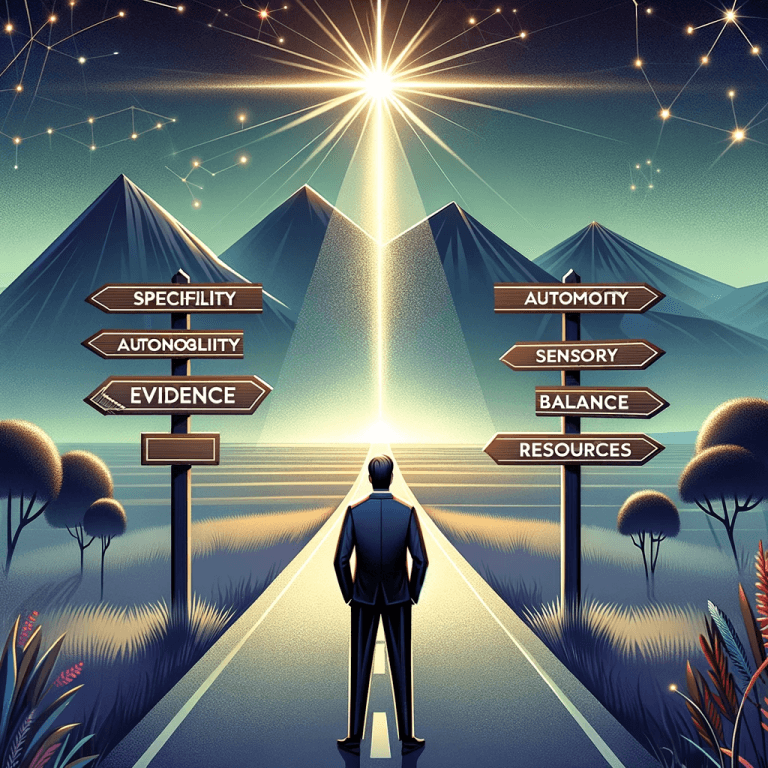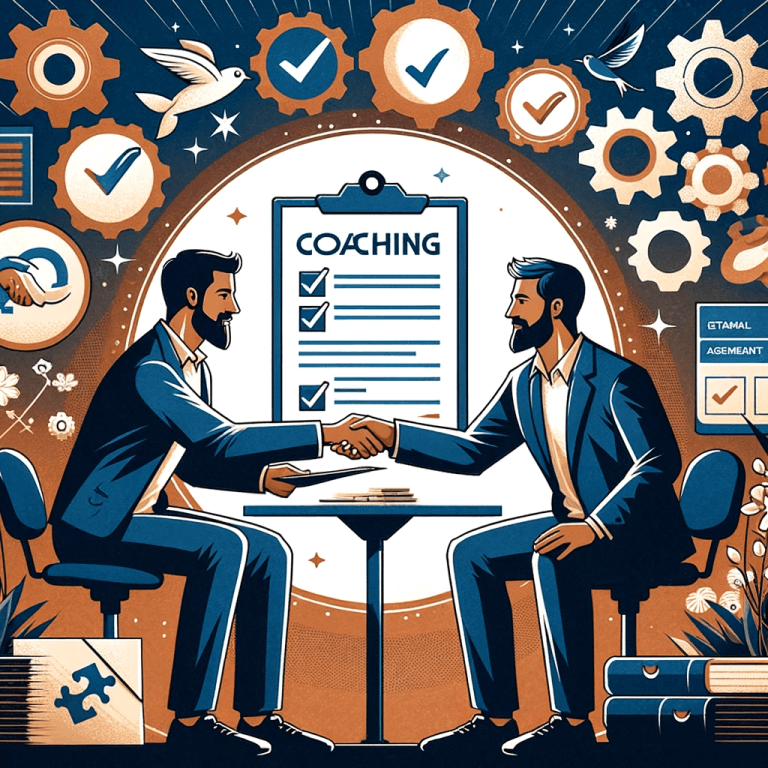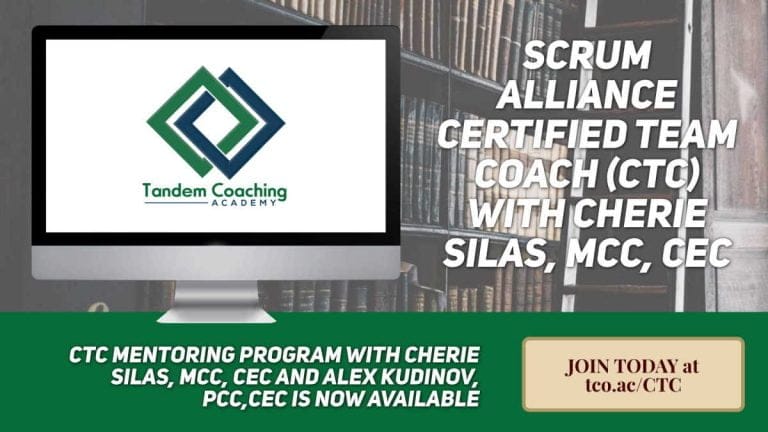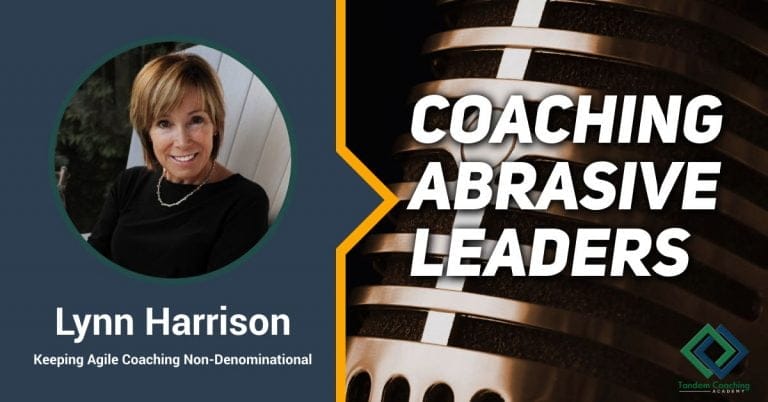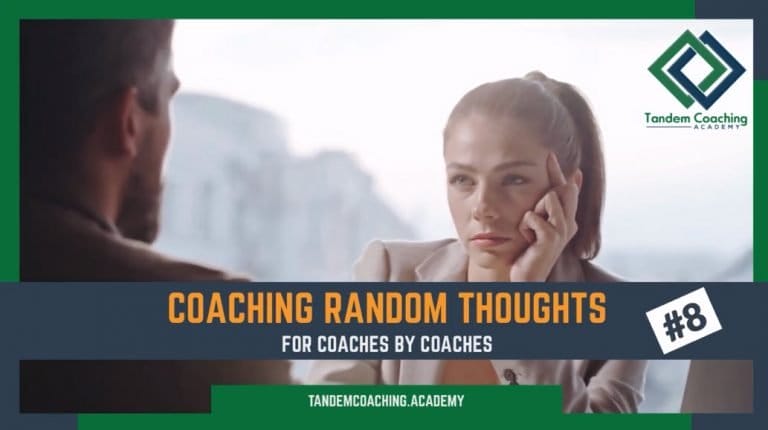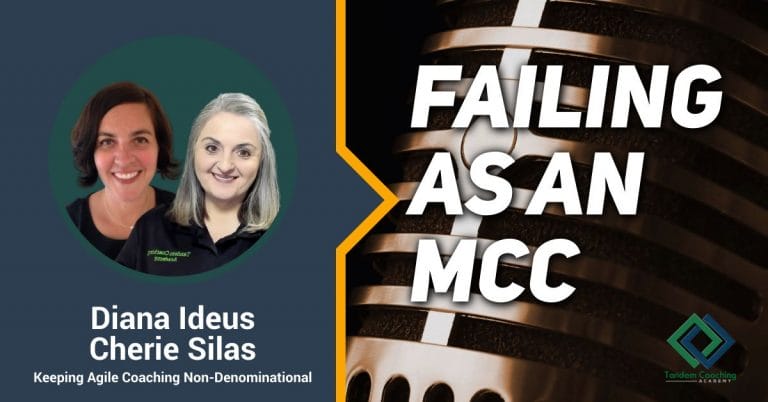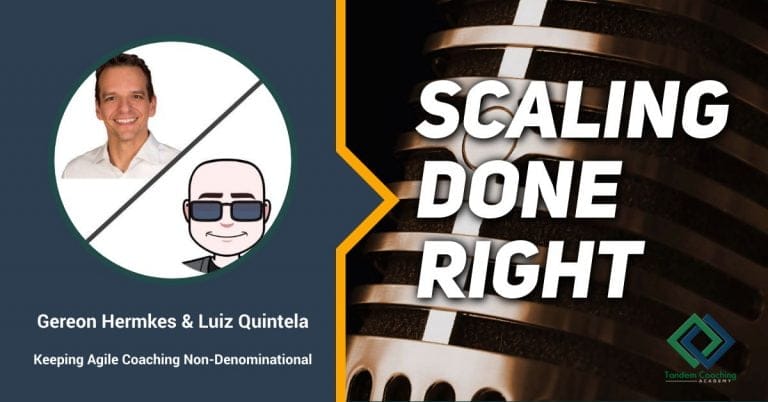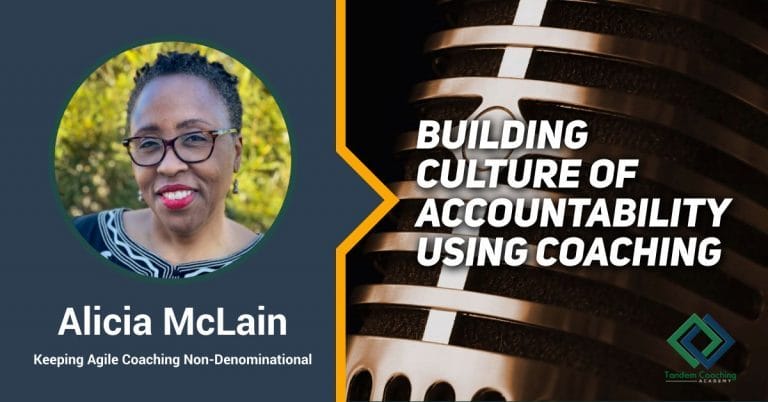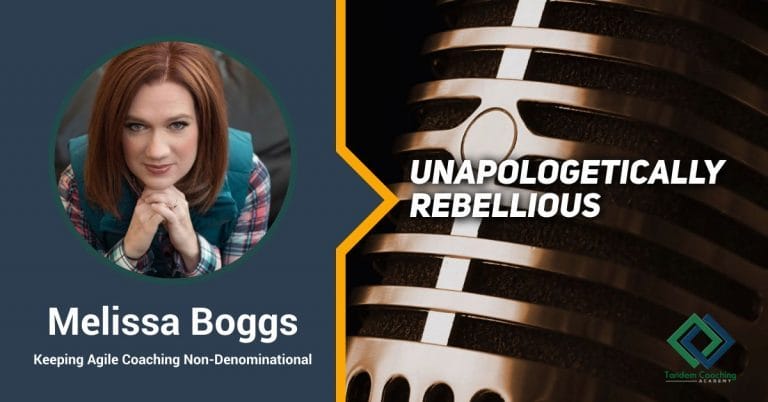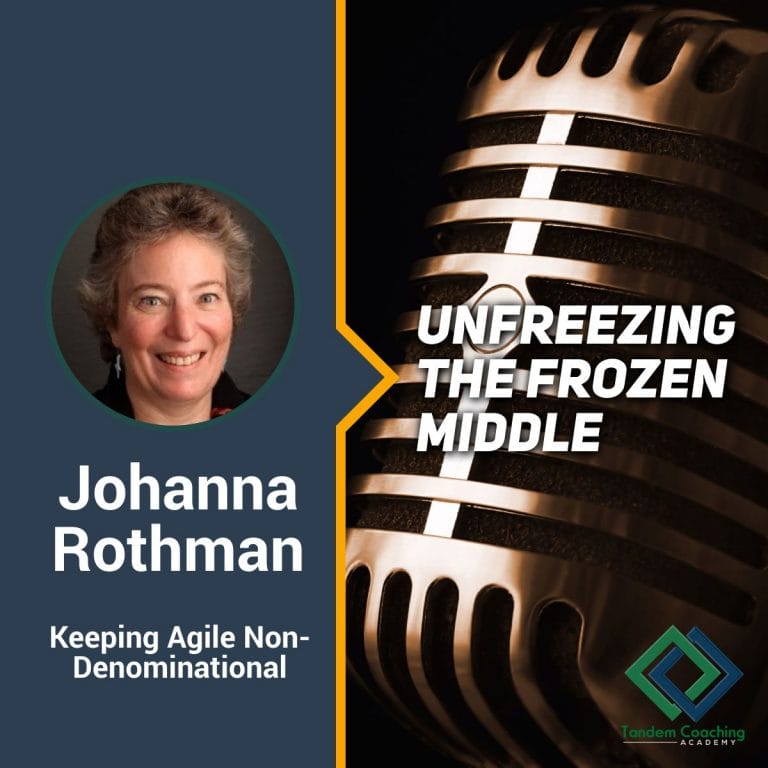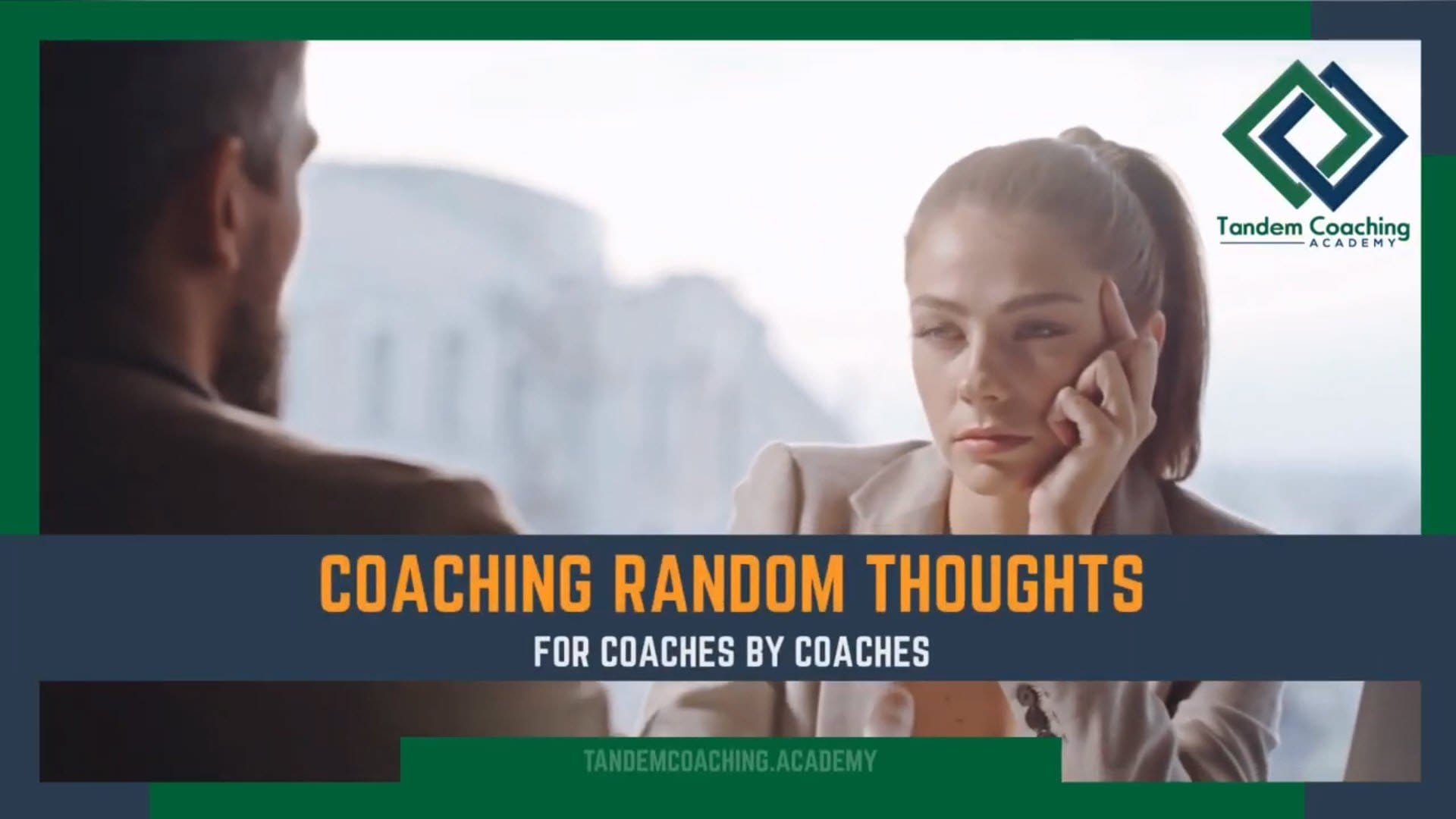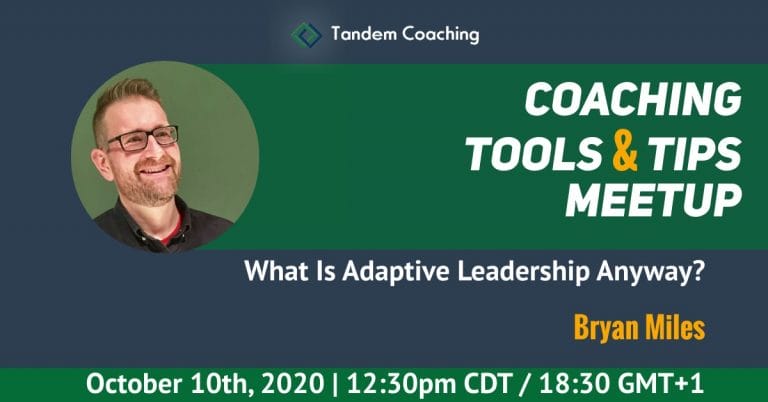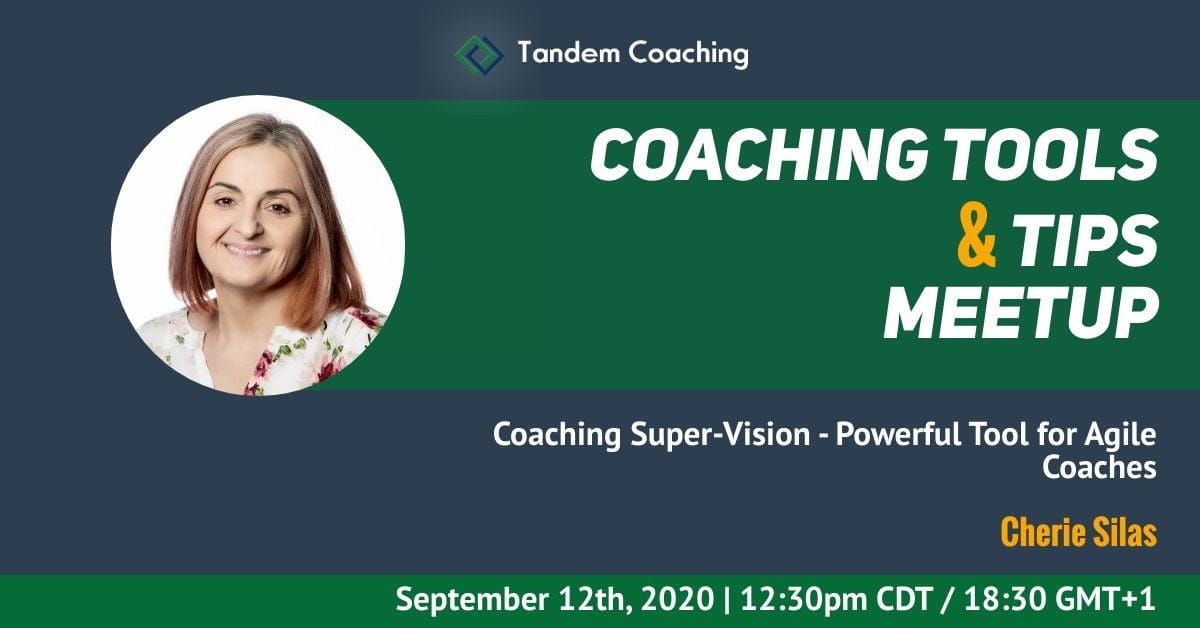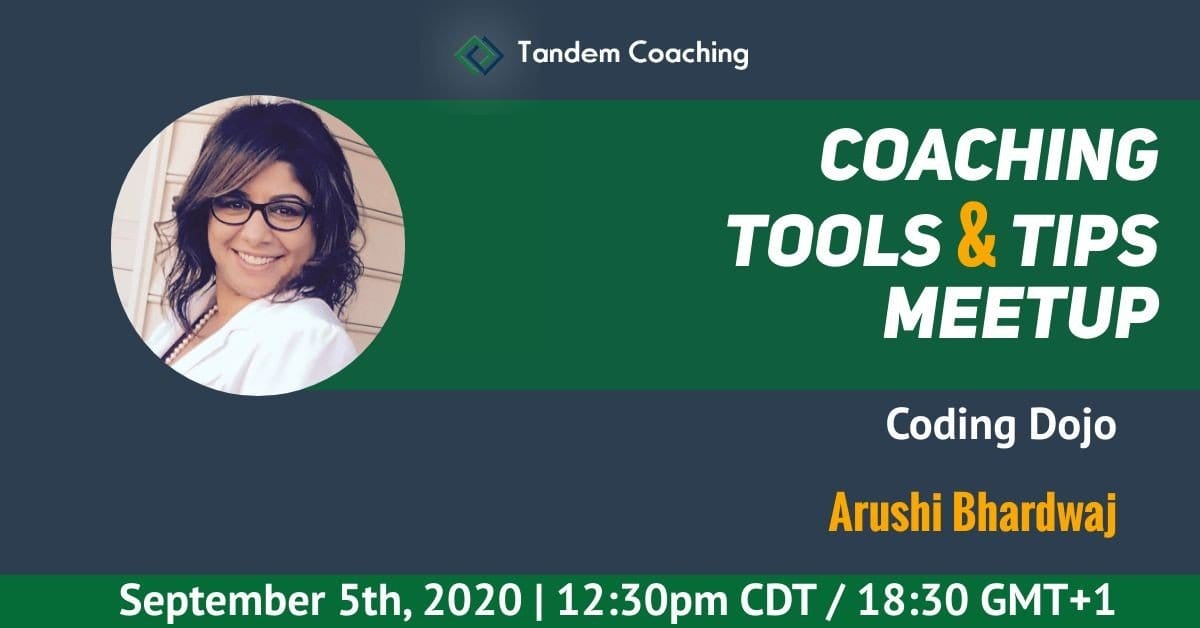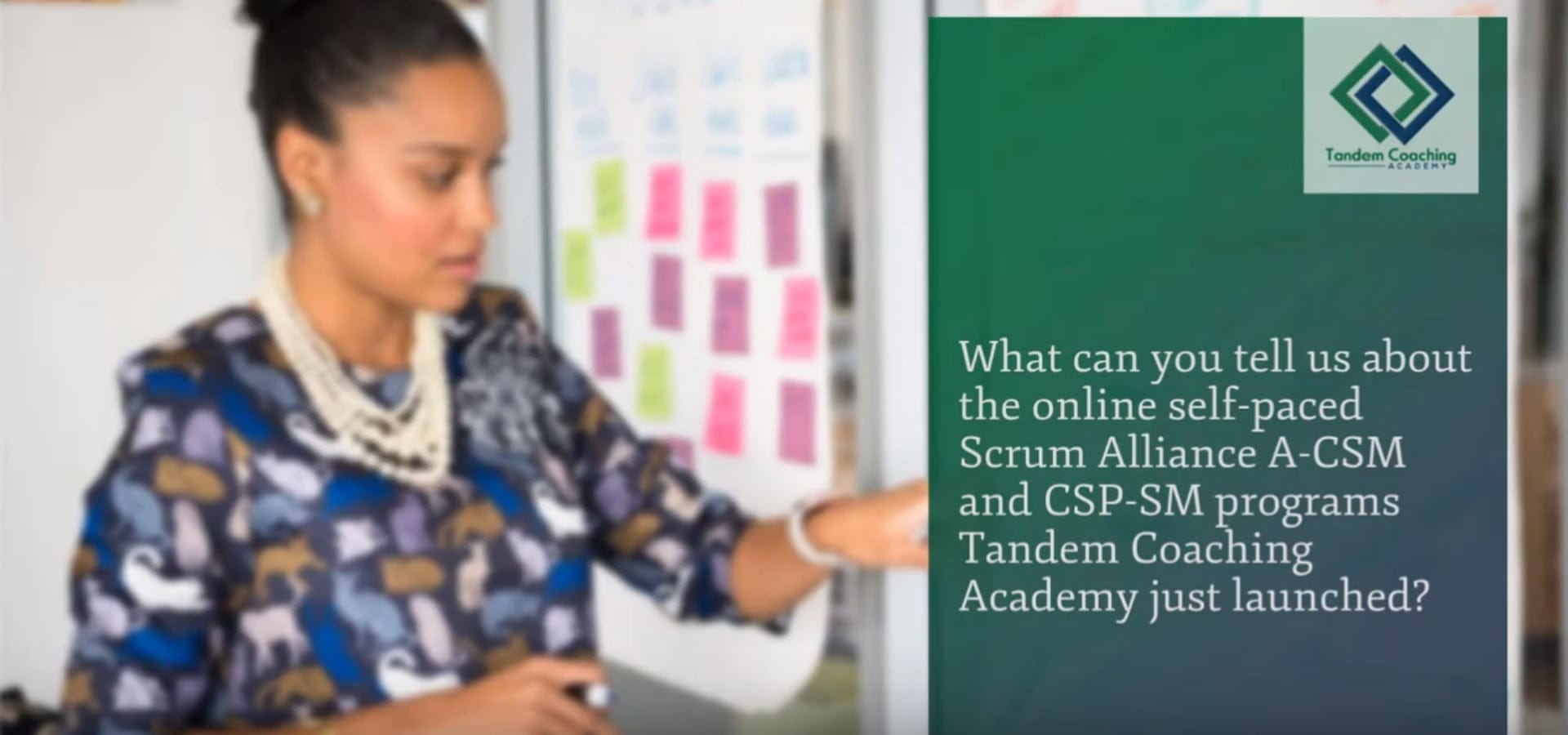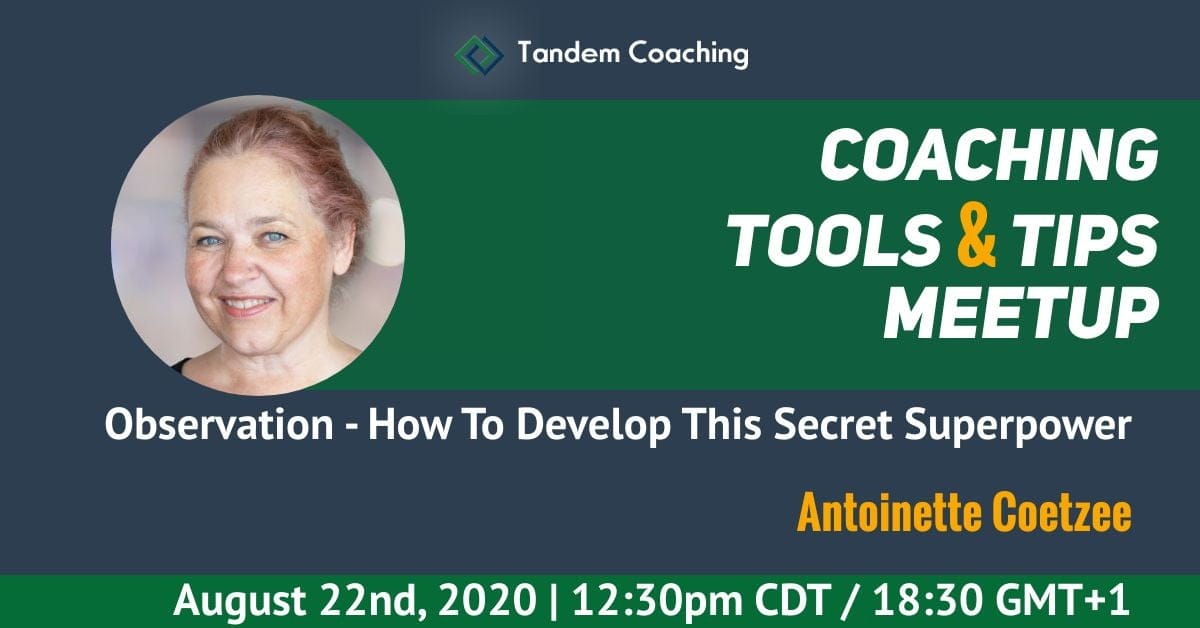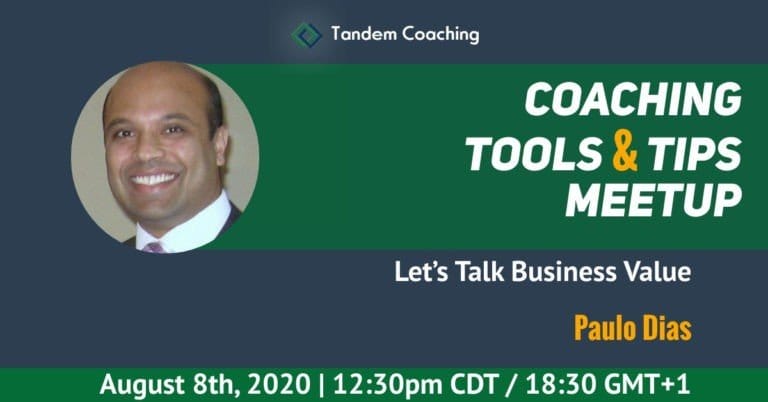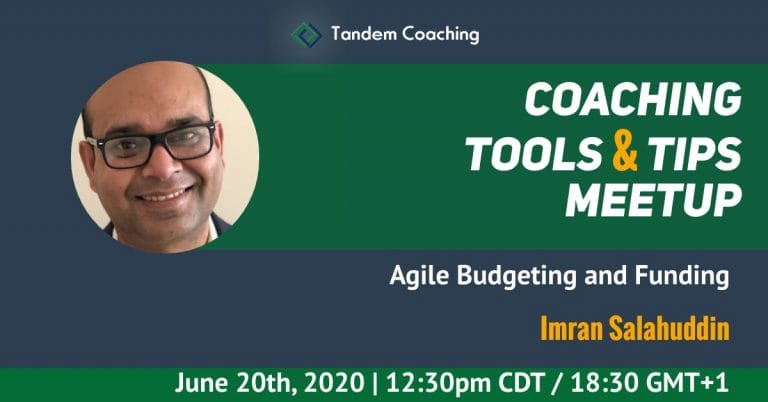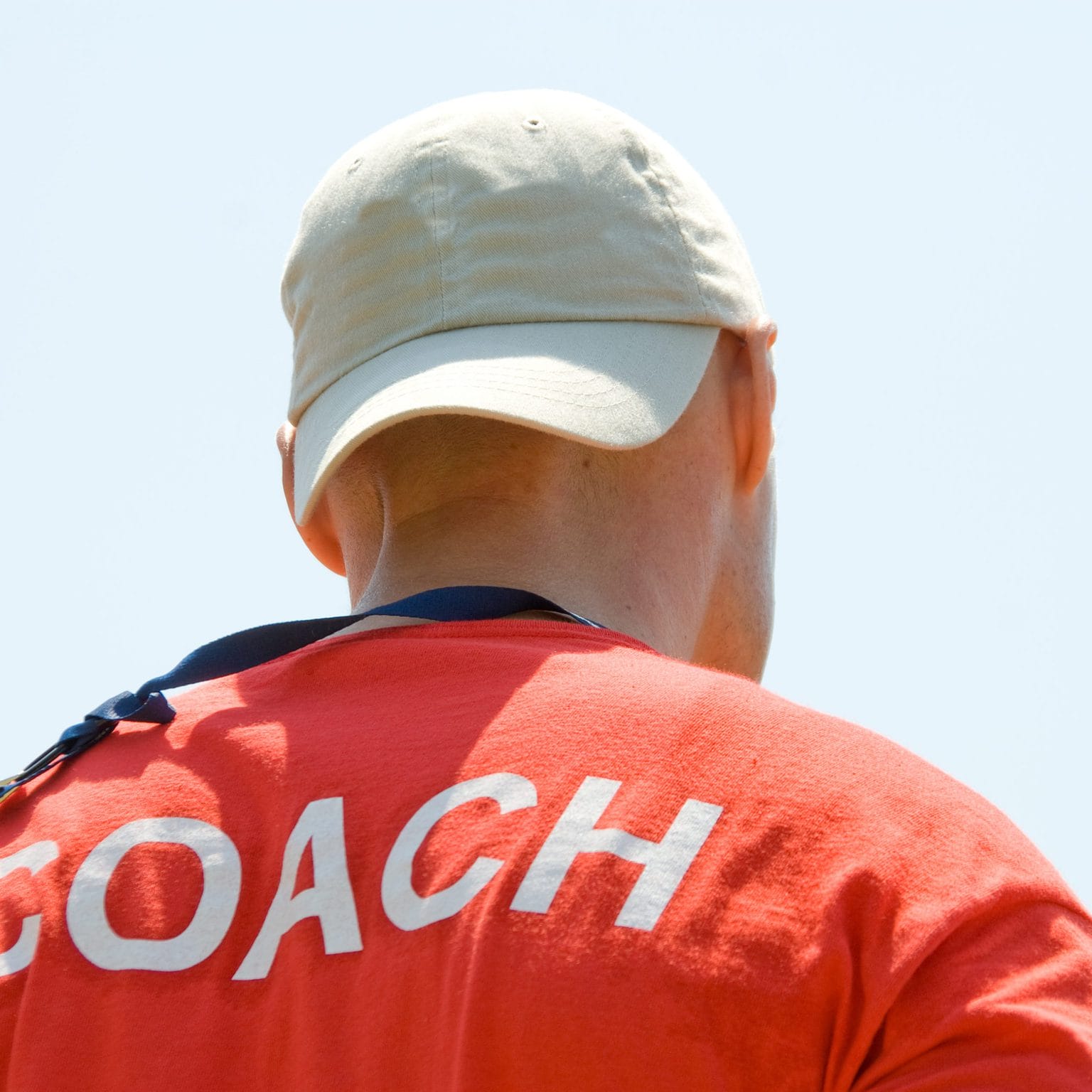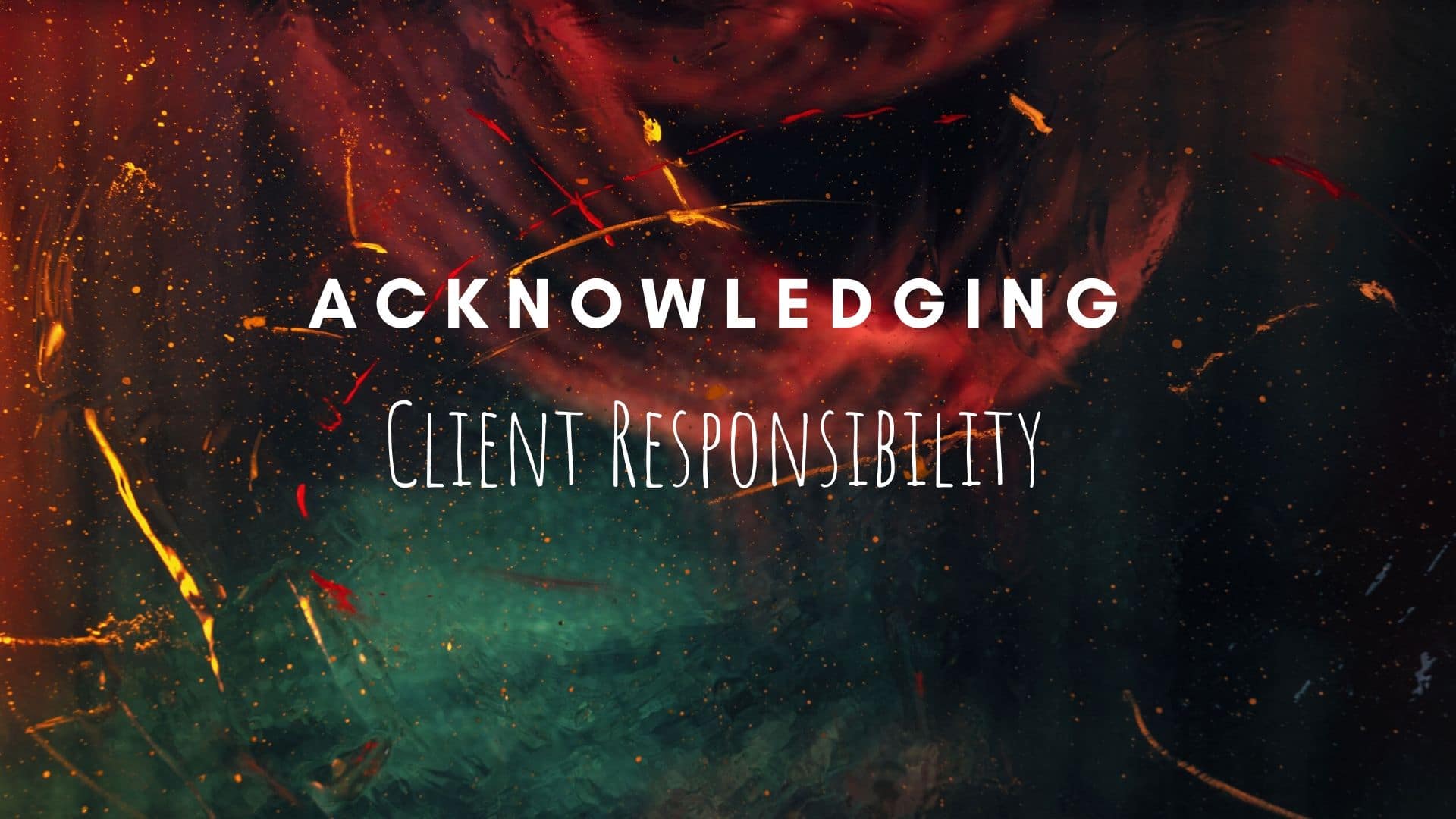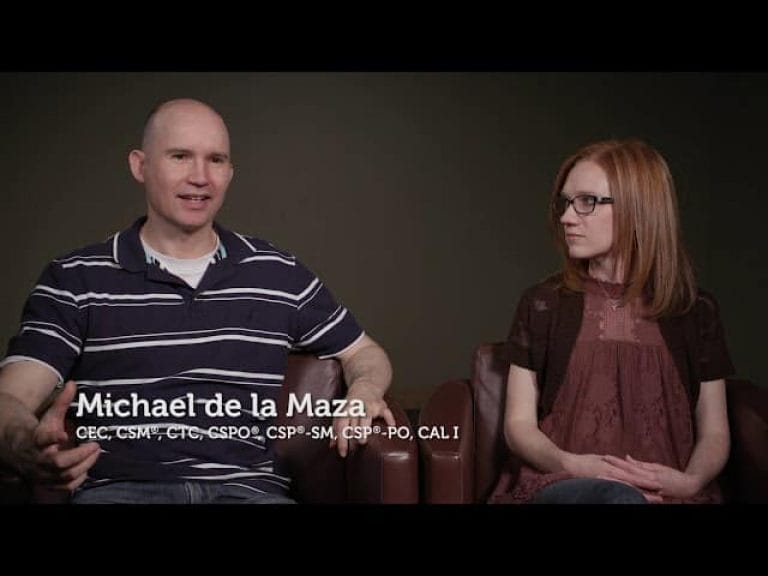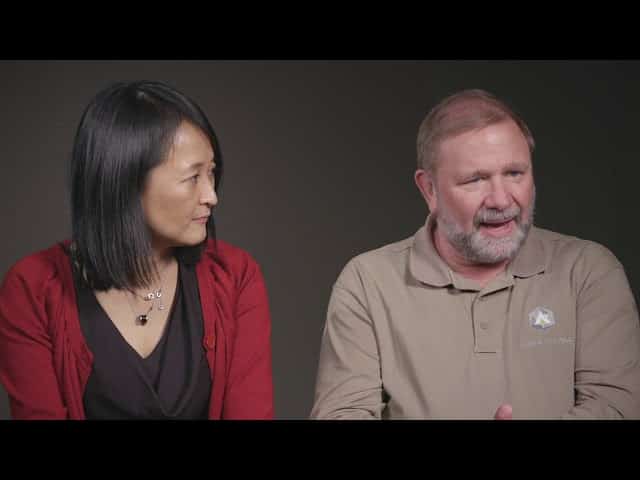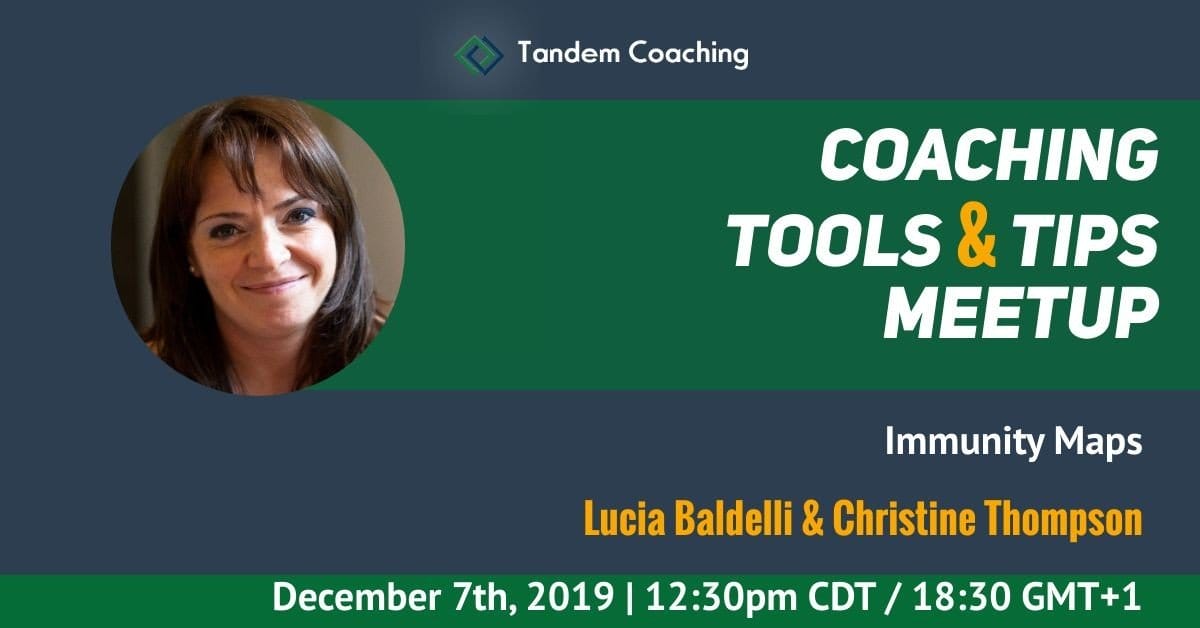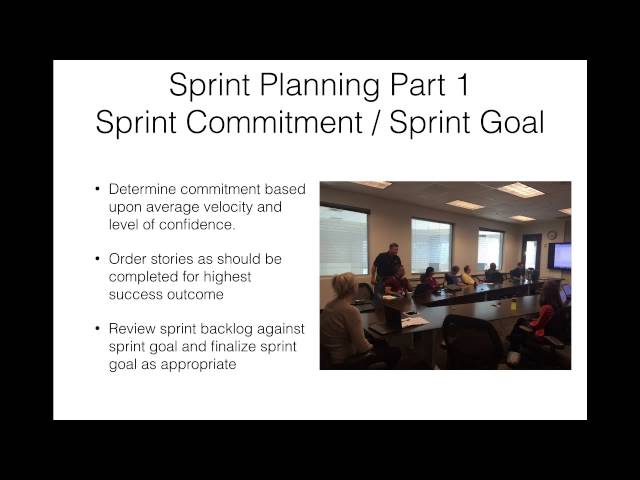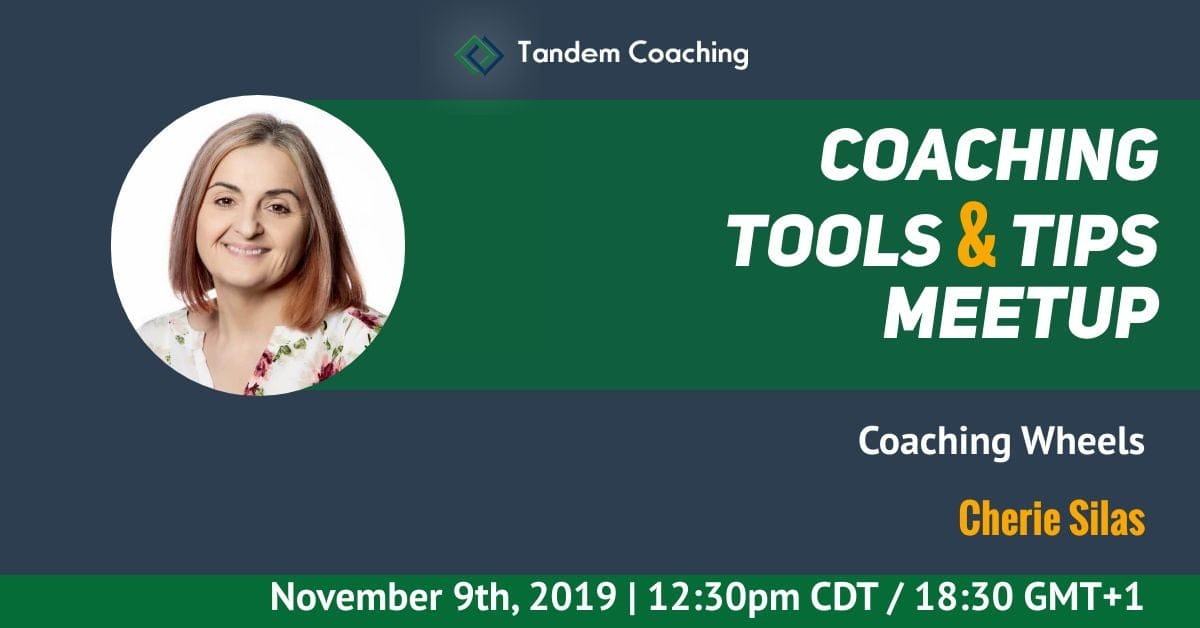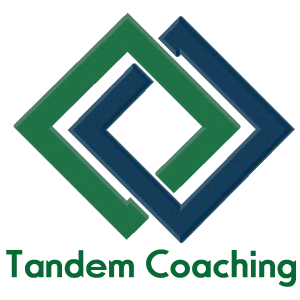Author:
All | Agile | Book Review | Coaching | Courses | Executive Coaching | HR | icf-core-competencies- | Kanban | Leadership | NLP | Other | Podcast | Product Management | Scrum | Uncategorized | Video
15 March 2024
Exploring Nooks and Crannies: Executive Coaching vs Life Coaching
Exploring the nuances of executive vs. life coaching, this article delves into how each approach fosters growth differently—executive coaching focuses on enhancing leadership and professional skills, while life coaching aims at personal fulfillment and emotional well-being, helping individuals navigate life's challenges and achieve their full potential in both personal and professional realms.
13 March 2024
Unlocking Agile Leadership: 5 Key Coaching Strategies for Executive Success
Discover five key coaching strategies for enhancing executive success in an agile context. Learn how active listening, reflection, client language, emotional exploration, and empathy can transform leadership effectiveness, fostering a culture of adaptability and continuous learning.
12 March 2024
Empowering Leadership: 5 Essential Coaching Strategies for Executive Teams
Discover five essential coaching strategies that empower leadership teams to navigate challenges with emotional intelligence, reflection, storytelling, constructive feedback, and agility, fostering a culture of collaboration and innovation.
10 March 2024
Is Hiring an Executive Coach Worth It? Let’s Find Out!
Exploring the value of executive coaching, this article delves into how it catalyzes personal and professional growth. Unpacking the benefits, costs, and strategic considerations, it guides readers through the decision-making process, helping to determine if executive coaching is the right investment for achieving their goals and enhancing leadership capabilities. A must-read for professionals contemplating this transformative journey.
9 March 2024
ICF Credential Renewal Made Easy – Read This Guide to Renew Your ICF Credential
Renewing your ICF credential signifies a commitment to professional development and coaching excellence. This process, involving detailed application submission and adherence to ICF core competencies and ethics, marks a significant milestone in your coaching career. Leveraging resources like Tandem Coaching facilitates meeting stringent renewal requirements and enhances your coaching skills.
4 March 2024
Mastering Listening Actively: An In-depth Look at Updated ICF Core Competency 6 for Coaches
Discover five active listening techniques essential for ICF ACC certified coaches, enhancing coaching effectiveness and leadership development in agile contexts.
1 March 2024
5 Keys to Well-Formed Outcomes in Executive Coaching
Discover five essential keys to crafting well-formed outcomes in executive coaching, transforming broad aspirations into tangible achievements for leaders.
29 February 2024
Elevating Leadership: 4 Cornerstones of Effective Team Coaching
Discover the four cornerstones of effective team coaching for leadership and executive teams: cultivating co-creative relationships, emphasizing emotional intelligence, encouraging reflective silence, and nurturing a learning mindset. These principles guide leaders towards visionary and empathetic leadership in modern organizations.
28 February 2024
Unlocking the True Potential: Coaching the Person, Not Just the Problem
Explore how coaching the person rather than the problem can transform leadership and executive coaching, inspired by Marcia Reynolds's innovative approach.
27 February 2024
Unlocking Agile Leadership: 5 Key Strategies for Coaching High-Performance Teams
Discover five key strategies for agile coaches to transform leadership teams: embracing presence, cultivating emotional intelligence, championing work-life harmony, leveraging silence for reflection, and building a foundation of continuous learning. These approaches foster resilience, innovation, and a culture of trust in agile environments.
26 February 2024
Beyond Solutions: Empowering Agile Leaders Through Person-Centered Coaching
Explore how person-centered coaching empowers agile leaders, focusing on trust, active listening, reflective inquiry, and embracing the leader's whole self for transformative growth.
23 February 2024
Elevating Executive Coaching: NLP Presuppositions for Advanced Leadership
Dive deeper into NLP presuppositions with a focus on executive coaching, highlighting principles that enhance leadership qualities and decision-making processes.
22 February 2024
Mastering Team Dynamics: The 8 ICF Competencies Every Executive Coach Needs
Explore the eight ICF competencies for team coaching that every executive coach needs to master, ensuring ethical, impactful, and transformational coaching practices.
21 February 2024
Unlocking Leadership Potential: 5 Key Strategies for Actions and Accountability in Coaching
Discover five transformative strategies for actions and accountability in coaching leaders. Learn how to foster autonomy, tailor accountability, celebrate successes, navigate barriers, and encourage continuous learning for impactful leadership development.
19 February 2024
Empowering Agile Leaders: 4 Strategies for Action and Accountability
Discover four key strategies for empowering agile leaders through action and accountability, enhancing their effectiveness and fostering a culture of continuous improvement.
16 February 2024
Unlocking Leadership Potential: 5 NLP Presuppositions Every Coach Should Know
Explore 5 NLP presuppositions that transform coaching practices for leaders and executives, offering insights into human behavior and thought processes for profound professional growth.
15 February 2024
5 Strategic Steps to Establish an Effective Engagement Plan for Agile Leadership Teams
Discover five strategic steps for agile coaches to establish an effective engagement plan for leadership teams, ensuring alignment, clarity, and sustainable growth.
14 February 2024
Mastering the Art of Multi-Level Listening: A Coach’s Guide
Explore four essential tips for mastering multi-level listening in coaching. Learn how to embrace silence, listen beyond words, perceive the unspoken, and use yourself as an instrument for deeper client understanding and support.
13 February 2024
ICF Credentials Requirements – A Hogwarts Guide to Coaching Certification
Embark on a magical quest to ICF Coaching Certification, akin to Hogwarts' wizarding journey. Discover the essence of ICF credentials, their significance, and how they transform you into a revered coach. It's not just about learning; it's about applying core competencies and ethical standards to elevate clients and the profession alike. Join this enchanting adventure to unlock your coaching potential and weave spells of change and growth.
13 February 2024
4 Strategic Steps to Establishing an Effective Engagement Plan for Leadership Teams
Learn four strategic steps for creating an effective engagement plan for leadership teams, focusing on comprehensive assessments, inclusive engagement, clear goal-setting, and continuous improvement.
12 February 2024
4 Essential Listening Skills for Agile Leadership Coaching
Discover how to master the art of listening in agile leadership coaching with these four essential skills, transforming your coaching approach and enhancing organizational agility.
11 February 2024
Unlock Your Potential with Coach Supervision: Insights from Accredited Supervisor Cherie Silas, MCC, ESIA
Unlock the transformative power of coach supervision with insights from Cherie Silas, MCC. Discover how reflective practices and mentorship by accredited supervisors like Silas enhance coaching effectiveness and professional growth. Learn the difference between coaching supervision and mentor coaching and explore the path to becoming an accredited coach supervisor. Elevate your coaching with proven strategies for success.
9 February 2024
5 Key NLP Techniques for Executive Coaches
Discover five NLP techniques that can revolutionize executive coaching, from building rapport to reframing challenges, and how they can enhance leadership development.
8 February 2024
5 Powerful Strategies to Elevate Leadership and Executive Teams
Discover 5 transformative strategies for elevating leadership and executive teams, from cultivating trust to embracing systemic thinking and accountability, all through the lens of Cherie Silas's coaching expertise.
7 February 2024
Coaching Agreement in 2024: From Session Plans to ICF Life Coaching Contracts
Discover the 5 essential steps to crafting effective coaching agreements with leaders and executives, paving the way for transformative growth and achievement in professional settings.
6 February 2024
5 Key Strategies for Building Trust and Effective Communication in Agile Teams
Discover five transformative strategies for building trust and enhancing communication in agile teams, from understanding individual contexts to fostering openness and establishing clear goals.
5 February 2024
5 Steps to Establishing Effective Coaching Agreements with Agile Leaders
Explore five key steps to establishing effective coaching agreements with agile leaders, ensuring clarity, trust, and impactful outcomes.
2 February 2024
5 Essential NLP Techniques for Effective Leadership Coaching
Discover five transformative NLP techniques for leadership coaching, from building rapport to enhancing sensory acuity, that can revolutionize how leaders communicate, set goals, and foster team growth.
1 February 2024
Transformative Systems Coaching: Unveiling 5 Strategies with Real Impact
Dive into the world of systems coaching with strategies that are both research-backed and proven in real-world settings, showcasing the transformative power of holistic organizational change.
31 January 2024
Maximizing Leadership Potential: 4 Key Strategies for Personal Growth
Discover four transformative strategies for personal growth in leadership: Active Listening, Evoking Awareness, Recognizing Emotional Shifts, and Fostering a Forward-Thinking Mindset.
30 January 2024
4 Key Pillars of the ICF Core Competency Model Every Coach Should Know
Discover the 4 foundational pillars of the ICF Core Competency Model that are essential for effective coaching, from ethical practice to cultivating client growth.
29 January 2024
5 Transformative Coaching Techniques for Agile Leaders
Explore five practical coaching strategies for agile leaders, focusing on active listening, insightful questioning, and emotional intelligence to enhance team dynamics and organizational growth.
28 January 2024
Evolving Your Coaching Skills: Mastering ICF Competencies for Career Growth
Unlock the pathway from novice to expert in the coaching field by nurturing and mastering ICF competencies, essential for personal and professional growth.
27 January 2024
Coaching Confidence Boost: Develop Essential Skills and Thrive in Your Coaching Practice
Cultivate your coaching confidence with actionable strategies. Embrace continuous learning, constructive feedback, and a supportive community to thrive in your practice.
27 January 2024
Maximizing Your Coaching Effectiveness: Practical Ways to Apply ICF Competencies
Explore how integrating ICF competencies into your coaching practice can unlock your full potential, enhancing your effectiveness and impact as a coach.
26 January 2024
Demystifying the ICF Certification Process: A Competency-Based Approach
Unravel the intricacies of the ICF competency-based certification process, essential for coaches aspiring to excellence and credibility in the coaching profession.
25 January 2024
Boost Your Coaching Skills: Strategies to Elevate ICF Competencies
Unlock the potential of ICF coaching competencies with effective strategies designed to enhance your coaching practice and leadership skills.
24 January 2024
Unlocking Coaching Excellence: A Guide to Mastering ICF Core Competencies
Discover how mastering the ICF Core Competencies is essential for coaching excellence, enhancing leadership, and promoting agile transformations in this insightful guide.
22 January 2024
Master the Art of Building Trust in Coaching Relationships – Expert Insights from Tandem Coaching Partners
Elevate your coaching by mastering trust-building with insights from Tandem Coaching Partners. Learn to create safe spaces, authentically engage, and maintain confidentiality for lasting client relationships.
22 January 2024
Unlocking Your Coaching Potential: The Path to ACC Certification
Explore the journey to becoming an ACC certified coach with the ICF, including key steps and how the Tandem ICF ACC Accelerate Coaching training program can support your path to certification.
20 January 2024
10 Books Every Coach Should Read for Personal and Professional Growth
Explore 10 must-reads for coaches seeking growth. This list offers insights into powerful coaching techniques, leadership, and personal development to transform your practice.
19 January 2024
Master Your Coaching Toolkit: 5 Must-Have Techniques for Driving Client Success
Explore five key coaching techniques including mindfulness, Socratic questioning, and strengths-based coaching to enhance client success and personal growth.
17 January 2024
Building a Successful Coaching Practice: Expert Insights for Attracting and Retaining Clients
Learn key insights for building a successful coaching practice, including defining your niche, enhancing online presence, and providing exceptional coaching experiences.
16 January 2024
The Power of Active Listening in Coaching: A Guide to Transforming Client Relationships
This guide highlights the importance of active listening in coaching, emphasizing its role in understanding client emotions and narratives, and building trust.
15 January 2024
Unlock Your Coaching Potential: 5 Essential Skills Every Aspiring Coach Must Master
The article outlines five essential skills for aspiring coaches, including active listening, asking powerful questions, building trust, exhibiting emotional intelligence, and remaining non-judgmental, as advised by experienced ICF Master Certified Coaches.
12 July 2023
Unlocking Your Potential as an Agile Coach: Exploring Different Paths for Professional Development
Discover pathways for advancing as an Agile Coach, including ICAgile Bootcamps and ICF coaching. This article guides you through different options, helping choose the right path for professional growth in agile coaching.
18 April 2023
PCC Coaching Mindset: Exploring ICF Team Coaching Competencies for Team Coaches
This article discusses the evolution of ICF Team Coaching Competencies and the introduction of the Advanced Team Coaching Certificate (ACTC). It highlights how these competencies and the ACTC program can enhance the skills and practices of team coaches.
21 June 2022
Loops and Knots – Amplifying Your Coaching Impact
Evoking awareness is a gift coaches can give their clients. Forward that awareness through its application and actions is what makes good coaching masterful.
6 February 2022
There Is No Spoon. There Are No Powerful Questions.
Asking powerful questions is more of a buzzword than a real skill agile and professional coaches use these days. In this video Alex Kudinov, PCC is digging into the source of the power behind questions a coach might ask and uncovers what is really going on.
6 February 2022
Product Backlog Ordering using Product Goals, Strategy, ROI
Product backlog ordering is an art by itself, especially in complex environments. We introduce a few techniques that help product owners manage product backlog.
6 October 2021
Coaching Scrum or Scrum Coaching with Howard Sublett
"You really want to do something? Walk into a predominantly black university offered to do a free class for the business students or whatever students. Do a free CSM. Two days, it's time. It's not about, 'can you give me money?' Nobody wants a handout. Can you give me your time? Go mentor somebody.
6 September 2021
Agile Coaching, Whys and Hows with Anu Smally and Cherie Silas
"You really want to do something? Walk into a predominantly black university offered to do a free class for the business students or whatever students. Do a free CSM. Two days, it's time. It's not about, 'can you give me money?' Nobody wants a handout. Can you give me your time? Go mentor somebody.
24 August 2021
Coaching The Person, Not The Problem with Dr. Marcia Reynolds
"You really want to do something? Walk into a predominantly black university offered to do a free class for the business students or whatever students. Do a free CSM. Two days, it's time. It's not about, 'can you give me money?' Nobody wants a handout. Can you give me your time? Go mentor somebody.
22 August 2021
We are hired to give our clients solutions that work. Aren’t we?
We are hired to give our clients solutions that work, not to ask endless questions! I hear this emotional expression and its endless variations from a lot of agile coaches, including those at the top of the food chain of the agile world.
Fair enough, there’s a rhyme and reason to that view. And it is a deeply flawed one. Here is why.
10 August 2021
Player Led Coaching with Geoff Watts
"You really want to do something? Walk into a predominantly black university offered to do a free class for the business students or whatever students. Do a free CSM. Two days, it's time. It's not about, 'can you give me money?' Nobody wants a handout. Can you give me your time? Go mentor somebody.
5 August 2021
Coaching From the Inside Out with J Val Hastings
"You really want to do something? Walk into a predominantly black university offered to do a free class for the business students or whatever students. Do a free CSM. Two days, it's time. It's not about, 'can you give me money?' Nobody wants a handout. Can you give me your time? Go mentor somebody.
27 July 2021
Coaching Abrasive Leaders with Lynn Harrison
"You really want to do something? Walk into a predominantly black university offered to do a free class for the business students or whatever students. Do a free CSM. Two days, it's time. It's not about, 'can you give me money?' Nobody wants a handout. Can you give me your time? Go mentor somebody.
20 July 2021
The Right Place, The Right Time with Anu Smalley
"You really want to do something? Walk into a predominantly black university offered to do a free class for the business students or whatever students. Do a free CSM. Two days, it's time. It's not about, 'can you give me money?' Nobody wants a handout. Can you give me your time? Go mentor somebody.
28 June 2021
Failing as an MCC with Cherie Silas and Diana Ideus
Agile Leadership is not a title, it's a mindset. This and other aspects of Agile Leadership we cover with author, speaker, and agile coach Zuzi Sochova in this episode of the Keeping Agile Coaching non-Denominational podcast.
28 June 2021
Surviving Zombie Scrum with Christiaan Verwijs and Johannes Schartau
Agile Leadership is not a title, it's a mindset. This and other aspects of Agile Leadership we cover with author, speaker, and agile coach Zuzi Sochova in this episode of the Keeping Agile Coaching non-Denominational podcast.
28 June 2021
Scaling Done Right with Gereon Hermkes and Louis “Q” Quintela
Agile Leadership is not a title, it's a mindset. This and other aspects of Agile Leadership we cover with author, speaker, and agile coach Zuzi Sochova in this episode of the Keeping Agile Coaching non-Denominational podcast.
28 June 2021
The Agile Fluency Conversation with Diana Larsen
Agile Leadership is not a title, it's a mindset. This and other aspects of Agile Leadership we cover with author, speaker, and agile coach Zuzi Sochova in this episode of the Keeping Agile Coaching non-Denominational podcast.
25 May 2021
Agile Leadership with Zuzi Sochova
Agile Leadership is not a title, it's a mindset. This and other aspects of Agile Leadership we cover with author, speaker, and agile coach Zuzi Sochova in this episode of the Keeping Agile Coaching non-Denominational podcast.
18 May 2021
Facilitating Real Conversations with Marsha Acker
Cherie Silas and Alex Kudinov are talking about building a culture of accountability in an agile enterprise using coaching with Alicia McLain
11 May 2021
Building A Culture of Accountability in an Agile Enterprise using Coaching with Alicia McLain
Cherie Silas and Alex Kudinov are talking about building a culture of accountability in an agile enterprise using coaching with Alicia McLain
8 May 2021
3 Books Every Coach Must Read
Whether you are an experienced executive coach, or a starting life coach, or an aspiring career coach, there is a book that claims to be a fantastic resource to launch your careers to the next level.
Here are some excellent books that helped me in my professional and career development as a professional coach. Neither of these is an advanced coaching book that will teach you some sacral coaching knowledge and will propel you and your coaching career to the stardom. However, if you have time and patience to grab a concept here, and a tidbit there, you will be on your way to becoming and masterful coach and a successful person.
7 May 2021
Demystifying ICF Certification with Cherie Silas
Cherie Silas leads a webinar where she explains the intricacies of the ICF Certification and demonstrates coaching skills and competencies in a coaching session.
4 May 2021
Coaching Performance with Alexis Chamow
Cherie Silas and Alex Kudinov are talking about coaching performance with Alexis Chamow
27 April 2021
Unapologetically Rebellious with Melissa Boggs
Melissa Boggs served as a Chief Scrum Master of Scrum Alliance and had a unique perspective on the role of a Scrum Master for the whole organization. In the world where a lot of us are struggling with defining the role of a Scrum Master at the organizational level, Melissa shares her unique experience with our readers and listeners in this podcast episode.
22 April 2021
ICF Core Competencies: Develop Your Coaching Presence
Mastering ICF's Competency 5, Maintaining Presence, coaches craft a space for client self-discovery. Through deep listening and strategic silence, they foster an environment where clients feel heard, supported, and empowered to explore their own paths. This commitment to presence enhances every session, guiding clients toward profound insights and transformative growth.
22 April 2021
Coaching Presence with Joanne Fourtanier
Coaching presence is one of the most complex and misunderstood professional coaching competencies. Cherie Silas and Alex Kudinov are chatting with Jo Fourtanier and discussing this competency in this podcast episode.
7 April 2021
Unfreezing the Frozen Middle with Johanna Rothman
The middle management is often referred to as the Frozen Middle. The renowned expert in leadership and modern management Johanna Rothman joins Tandem Coaching podcast to discuss how to unfreeze that frozen middle.
23 March 2021
Simplifying Coaching with Claire Pedrick
In our VUCA world do we as coaches need to add more complexity and make our craft all that complex? Claire Pedrick says we work too hard and too much. Simplifying coaching is the key to mastery.
17 March 2021
ICF Core Competencies: Empathy, Neutrality, and Vulnerability
The last few articles introduced concepts and International Coach Federation core competencies in co-creating the coach client relationship and building a strong coaching agreement with the client. In this article, we inspect another ICF core competency – Establishes and Maintains Agreements. We will also discuss the ways to make sure you and the client are appropriately matched before committing to a coaching relationship.
17 March 2021
ICF Core Competencies: Understand, Respect, and Acknowledge
The last few articles introduced concepts and International Coach Federation core competencies in co-creating the coach client relationship and building a strong coaching agreement with the client. In this article, we inspect another ICF core competency – Establishes and Maintains Agreements. We will also discuss the ways to make sure you and the client are appropriately matched before committing to a coaching relationship.
17 March 2021
ICF Core Competencies: Keys for a Strong Session Agreement
The last few articles introduced concepts and International Coach Federation core competencies in co-creating the coach client relationship and building a strong coaching agreement with the client. In this article, we inspect another ICF core competency – Establishes and Maintains Agreements. We will also discuss the ways to make sure you and the client are appropriately matched before committing to a coaching relationship.
17 March 2021
ICF Core Competencies: The Coaching Plan
The last article introduced the use of the STORMMES Model © in co-creating the relationship agreement with the client. In this article, we take a closer look at competency 3 Establishes and Maintains Agreements.The first three competency markers in this section help us to understand what a good relationship agreement contains.
17 March 2021
ICF Core Competencies: Preparation and Assistance
The stronger you grow in your experience of coaching the better coach you will be to serve your clients. This growth mindset will show up in your coaching because you will become more flexible, creative, and relational.
17 March 2021
ICF Core Competencies: Self-Awareness and Intuition
In this article of the series we are looking at the importance of recognizing and demonstrating cultural awareness in coaching practice.
17 March 2021
Scaling Coaching Through Systems Thinking
Scaling is often frowned upon in the Agile world. Scaling coaching from individuals to teams and to organizations is the only way to bring the systemic change to bigger and wider systems and we believe that scaling coaching through systems thinking is the way to go.
16 March 2021
It Might As Well Be Me! with Lyssa Adkins
After writing her groundbreaking Coaching Agile Teams, Lyssa was put on pedestal by the Agile community and has been there since, casting a shadow (or shining a bright light) on the community as a whole and brining wisdom of Agile coaching to the growing pool of agile coaches. In this episode we are talking about what brought Lyssa to Agile coaching, what changes she notices in Agile coaching as of late, and what she is looking forward to in 2021.
9 March 2021
Meeting Them Where They Are with Allison Pollard
In this episode Allison Pollard discusses the concept of "meeting where they are," and what it means for Agile Coaches. How do we support people on their agile journey? What changed over the last year? When might we pivot as agile coaches and what is significance of keeping agile non-denominational.
23 February 2021
Let’s Talk Coaching Business with Cornelia Shipley
Are you running your business or working for it? What does it take to build a successful coaching business? What obstacles should you expect and how Cornelia, a successful entrepreneur, overcame those? All of this and more.
9 February 2021
Coaching through Infertility with Pradeepa Narayanaswamy
Miscarriage is a loss-why should it be treated like any other loss? Right now it’s not - in most organizations. What kind of support and conversations that can be had in organizations to clear the taboo about infertility? How can a manager have a conversation or support someone in their team going through infertility? As a colleague or friend, how can you support someone with infertility? When you meet someone new in your organization, here is a question you don’t ask.
6 February 2021
ICF Core Competencies: Managing Client Focus, Session Time, and Relationship Completion
Every coaching conversation begins with the client’s agenda and focus. The client holds the content, and the coach holds the process. Together they partner to make progress towards the client’s goals. The goal of coaching is to create client awareness. It is more important that the client learn and make progress toward the goals outlined at the beginning of the conversation than it is to get to the end, ring the bell and say, “We did it!”
26 January 2021
Co-creating Strategic Shifts with Coaching with Karl Van Hoey
Coaching is an awesome instrument to engage in a co-creative process allowing to make strategic shifts in business-turmoil. In this episode we touch upon how coaching and co-creation can - even in deep crisis - be more effective and sustainable than typical "crisis" management; how coaching brings more innovation to strategic thinking and what is needed to stand open for an entire new business model.
19 January 2021
Reflective Supervision: Coaching for Coaches with Cherie Silas
In this episode Cherie Silas is talking about Reflective Coaching Supervision practice and how it can help professional and agile coaches to take their craft to the next level.
16 January 2021
Leaders Are Coaches Too with Tricia Broderick
Coaching is a word with so many misunderstood meanings and implementations. Unfortunately and fortunately, there is no single way to coach. What is now abundantly obvious is that coaching is a valuable skill for more professionals beyond Agile coaches. Turns out there is an answer to how leaders can create, enable and maintain high-performing teams, they leverage professional coaching in their leadership delivery. We are discussing and examining the link between quality leaders and professional coaching.
15 January 2021
What Does Agile HR Hiring Look Like?
Lucia Baldelli and Karen Bruns discuss how hiring - one of the main HR functions changes for the better in the agile ways.
13 January 2021
Supporting Employees The Agile Way
Lucia Baldelli and Karen Bruns are talking about how HR professionals can understand the employee’s perspective of the workplace. More importantly how they can understand and realize what we want their perspective to be.
12 January 2021
Agile HR Manifesto
Agile Manifesto that we've all come to know and love does talk about the people piece. However, the Agile for HR manifesto takes it a little bit deeper. It takes a look at things like collaborative networks, transparency, adaptability, inspiration, and engagement, intrinsic motivation and ambition.
9 January 2021
What Does Agile HR Mean?
What's the HR role in agility, in shaping agility, for an organization and there's a few examples that maybe we could discuss together, Karen, on what HR could do differently to help improve the agility of an organization.
13 December 2020
Professional Coaching Skills for Agile Coaches
We interviewed one of our past student, Christine Thompson, and asked her a few questions about agile coaching and professional coaching, and how professional coaching skills help her as an agile coach in her daily life.
2 December 2020
ICF Core Competencies: Partnering With Client For Success
The last few articles introduced concepts and International Coach Federation core competencies in co-creating the coach client relationship and building a strong coaching agreement with the client. In this article, we inspect another ICF core competency – Establishes and Maintains Agreements. We will also discuss the ways to make sure you and the client are appropriately matched before committing to a coaching relationship.
23 November 2020
How ICF Coaching Certification Elevates Professional Coaches Through ICF Accredited Coach Certification Programs
ICF became a de facto gold standard of coach training, credentialing and certification. If you are an aspiring coach who wants to work with individuals, teams, and organizations, or want to start your own coaching business, you should be seriously considering getting your ICF Coaching Certification as a way to stand out in this overcrowded field.
18 November 2020
Why Not Ask Why
Amongst the family of powerful questions the Why questions have their special spot. They are both extremely powerful, used correctly, and extremely dangerous. In this episode of the Coaching Random Thoughts, Alex Kudinov explores the ups and downs of using the why questions in your coaching and everyday conversations.
8 November 2020
Coaching Teams with Causal Loop Diagrams
Cherie Silas, MCC, CEC is introducing our Coaching Tools & Tips Meetup audience to the practice of reflective coaching supervision, that is dubbed as coaching for coaches.
26 October 2020
ICF Core Competencies: The Relationship Agreement
The last article introduced the use of the STORMMES Model © in co-creating the relationship agreement with the client. In this article, we take a closer look at competency 3 Establishes and Maintains Agreements.The first three competency markers in this section help us to understand what a good relationship agreement contains.
11 October 2020
What Is Adaptive Leadership Anyway?
In this workshop, Brian Miles explores how leaders create environments that navigate the complexity of interpersonal relationships, overcome the human element of barriers to change, and support the growth and engagement of their employees.
11 October 2020
Integrated Agile
Brock and Erkan are exploring the interplay between Waterfall and Agile, and how organizations can manage the resulting dynamics to their benefit. They introduce the concept of Polarity Management, which can be used to get the most out of any change effort. They also discuss a new concept called Integrated Agile, which aims to help organizations leverage the upsides of both Waterfall and Agile.
3 October 2020
Growing your Agile Team
Heidi discusses the criteria for hiring a great agile team and for growing a more high-performing team; drawing from experience from her extensive background in teamwork and collaboration, and pulling from sources such as the Google Aristotle study, Patrick Lencioni’s Five Dysfunctions of a Team, Stanley McChrystal’s Team of Teams, and others.
1 October 2020
Direct Communication in Coaching
Many think that coaching is all about asking powerful questions. That is an incorrect assumption. Coach there to help the client in whichever way available to gain new awareness. Direct communication is the key.
1 October 2020
Leadership Of Chaos – Accelerating Change through COVID
The past decade of Digital change has been one of disruption. Uncertainty, VUCA, Complexity have emerged as new concepts in business. Leadership had to adapt, notably with agility. But who would have predicted what happened in 2020 and the pandemic? The world seems to have turned upside down in a matter of weeks. Change is inevitable, or businesses shut down. It is also a time to explore new possibilities. This talk will explore how good leadership through the crisis is in fact no more than great Agile leadership: Developing autonomy, promoting alignment, creating strategic clarity and keeping collaboration going by creating remote first working practices.
28 September 2020
Transformational Coaching Skills: Powerful Coaching Questions to Ask Clients
In transformational coaching, questions are powerful tools that unlock potential and guide clients toward self-discovery and achieving goals. By asking "What do you want your life to look like?" coaches help clients envision and create a future aligned with their deepest desires, ensuring the journey is as transformative as the destination.
26 September 2020
Hiring in the Virtualized World
Karen Bruns, an ICAgile AHR Instructor, shares her thoughts on the hiring in the virtualized world and how ICAgile class can help
26 September 2020
Self Reflection as a Coach Development Tool
Savita Pahuja, CEC, ACC explains how the simple techniques and values can be used by yourself to reflect on your recent coaching conversation, which will help you come up with action items for self-growth.
12 September 2020
Reflective Supervision for Coaches
Cherie Silas, MCC, CEC is introducing our Coaching Tools & Tips Meetup audience to the practice of reflective coaching supervision, that is dubbed as coaching for coaches.
6 September 2020
Coding Dojo
Arushi Bhardwaj joing Tandem Coaching Academy Coaching Tools & Tips Meetup to talk about Coding Dojo and how it helps develop team skills.
22 August 2020
Observation – How To Develop This Secret Superpower
Antoinette Coetzee joins Tandem Coaching's Coaching Tools & Tips meetup to discuss the powerful coaching skill of observation and how to use it in your agile (and not only agile) practice.
8 August 2020
Let’s Talk Business Value
Paulo Dias joins Tandem Coaching's Coaching Tools & Tips meetup to talk about business value.
26 July 2020
ICF Core Competencies: Co-Creating the Relationship
With the release of the new Core Competency Model, ICF has taken an expanded approach to competency in co-creating the coaching relationship with the client. In the new model, section B focuses on three competencies needed to properly co-create the relationship with the client:3. Establishes and Maintains Agreements
4. Cultivates Trust and Safety
5. Maintains Presence
Here we are covering these competencies.
17 July 2020
On Scrum Mastering
Best Agile Articles Conference is a Quarterly event where Best of the Best Authors share their wisdom. We were thrilled to host Ewan O'Leary.
17 July 2020
Agile Coaching for Winning Teams
Best Agile Articles Conference is a Quarterly event where Best of the Best Authors share their wisdom. We were thrilled to host Allison Pollard.
17 July 2020
How Scrum Master Can Enhance Daily Scrum
Best Agile Articles Conference is a Quarterly event where Best of the Best Authors share their wisdom. We were thrilled to host Ajeet Singh.
17 July 2020
Agile Leadership: How to Change World of Work
Best Agile Articles Conference is a Quarterly event where Best of the Best Authors share their wisdom. We were thrilled to host Zuzana Sochova.
17 July 2020
The Fatal Attraction of Classical Hierarchies
Best Agile Articles Conference is a Quarterly event where Best of the Best Authors share their wisdom. We were thrilled to host Kurt Nielsen with his talk "The Fatal Attraction of Classical Hierarchies."
14 July 2020
Proper Scaling of Scrum And Dynamic Financial Forecasting
Best Agile Articles Conference is a Quarterly event where Best of the Best Authors share their wisdom. We were thrilled to host Gene Gendel.
11 July 2020
The Why of an Agile Retrospective
Harris Christopoulos joins Tandem Coaching's meetup to talk about retrospective and share some real life stories and tips
8 July 2020
What Is Stopping You?
As coaches, we ask a lot of questions. Some are good, some are not so much. Some are open, some are closed. Some are transactional, some a transformational. In this episode of the Coaching Random Thoughts, Alex Kudinov explores the omnipresent "What is Stopping You?" question and discusses some better alternatives.
20 June 2020
Agile Budgeting and Funding
Imran Salahudding discusses benefits, pitfalls, of Agile funding and budgeting and how you can use it in your organization
6 June 2020
Igniting the Role of Agile HR in the Remote Age
Elena Vassilieva and Heidi Araya are discussing how Agile changed the role of HR in the organizations and specifically in the age of remote work that is upon us.
27 May 2020
Shu Ha Ri of Professional Coaching
Shu-Ha-Ri is a well-known concept in the Agile and Scrum worlds. Have you thought it is also applied to the world of Professional Coaching?
23 May 2020
ICF Core Competencies: Cultural Awareness
In this article of the series we are looking at the importance of recognizing and demonstrating cultural awareness in coaching practice.
23 May 2020
NLP Strategies for Coaching
Christine Thompson is the NLP Master Practitioner and discusses NLP Strategies and their use in the coaching.
23 May 2020
The House of Scrum
House of Scrum is a metaphor Alex Kudinov uses to explain the fundamentals of the Scrum Framework solve complex and adaptive problems.
23 May 2020
ICF Core Competencies: Coaching Mindset Self-Development
The stronger you grow in your experience of coaching the better coach you will be to serve your clients. This growth mindset will show up in your coaching because you will become more flexible, creative, and relational.
11 May 2020
Coaching Skills for Agilists
Cherie Silas and I discuss the importance of professional coaching skills for Agilists. In short – they are paramountly important.If you want to up your coaching game – our next Coaching in Agile Environments program cohorts are starting in July. Check it out and sign up!
9 May 2020
Curiosity: What Great Teams Need
Suzanne Doyle is discussing the importance of curiosity - and how it helps the agile teams to become great
30 April 2020
First Revelations of a Global Time-Out
As a consultant, I have been constantly worried about staying employed during our global pandemic and how I am going to care for my just-turned-seven-years-old son while his school and daycare are shut down. I’m youngish with too much self-inflation, but too distracted to unpack that much past writing a blog sentence or three. These are my thoughts about work, food, and some important things I missed.
29 April 2020
Podcast #3: Is Scrum Master role a Luxury in Times of Turmoil?
Is Scrum Master role a Luxury in Times of Turmoil? Erica Henson, Jim Sammons, and Alex Kudinov share their thought.
18 April 2020
Total Brain Coaching
Ted and Keith Wallace are talking about Total Brain Coaching - a holistic system to help people effectively change their habits.
6 April 2020
Building Alignment: Team Working Agreement
Best Agile Articles 2018 is a collection of articles published in 2018. Watch Ellen Grove talking about building alignment through team agreement.
6 April 2020
Virtual Reality in Agile Coaching
The Best Agile Articles book series collects the best agile articles published during a calendar year into a single volume.
On April 6 the authors of the best agile articles published in 2018 came together for a workshop, giving their talk on topics such as Agile Leadership, distributed teams, and others.
Today Tandem Coaching Academy publishes the talk Elena Vassilieva gave during the workshop on the topic of Virtual Reality and Agile Coaching.
6 April 2020
Executive Led Agile Transformation
Best Agile Articles 2018 is a collection of articles published in 2018. Watch Joe Justice talking about Executive Led Agile Transformations
6 April 2020
Dear Beloved Client, Please Start By Doing
Best Agile Articles 2018 is a collection of articles published in 2018. Watch Kathryn Maloney talking about practical elements of working with clients.
6 April 2020
Five Tips to Lead Distributed Agile Teams
Johanna Rothman, an expert in product management, gives the audience of the Best Agile Articles Conference some tips about working with distributed agile teams in the age of remote work.
6 April 2020
Dealing with Difficult Stakeholders
The Best Agile Articles book series collects the best agile articles published during a calendar year into a single volume.
On April 6 the authors of the best agile articles published in 2018 came together for a workshop, giving their talk on topics such as Agile Leadership, distributed teams, and others.
Today Tandem Coaching Academy publishes the talk Roman Pichler gave during the workshop on the topic of managing and dealing with the stakeholders.
6 April 2020
Challenges of Being the Leader
The Best Agile Articles book series collects the best agile articles published during a calendar year into a single volume.
On April 6 the authors of the best agile articles published in 2018 came together for a workshop, giving their talk on topics such as Agile Leadership, distributed teams, and others.
Today Tandem Coaching Academy publishes the talk Tricia Broderick gave during the workshop on the topic of Challenges that Leaders Face Personally.
4 April 2020
Coaching from the East
Andrew Lin discusses the coaching from the East in the latest installment of the Coaching Tips and Tools meetup. Listen in and sign up for our Meetup!
21 March 2020
Coaching a Product Owner
In this installment of Coaching Tools & TIps Meetup Angie Pate is talking about Coaching the Product Owner - a key role on any high performing Scrum Team.
4 March 2020
TRIZ – Do Not Be Afraid
Erica Henson, an Agile Coach with Marathon Oil, is discussing a liberating structure that is designed to stop unproductive behaviors and make space for innovation – TRIZ. She shares her own experience using this liberating structure with her own team and a tip to Scrum Masters.This is the first video in a series Coaching by Example brought to you by Tandem Coaching Academy.
25 February 2020
Client Competence
Cherie Silas of Tandem Coaching Academy discusses the importance for a coach to hold their clients naturally creative, resourceful, whole, and competent.
17 February 2020
Scrum and Diffusion of Responsibility
In its various forms and shapes, the diffusion of responsibility can lead to such ugliness as moral disengagement, increased beyond-the-reason risk-taking behavior, social loafing, and groupthink.
6 February 2020
ICF Core Competencies: Acknowledging Client Responsibility
ICF recently released and updated competency model that will go into effect for credential applications in early 2021.What does this change mean for coaches? It means that it’s time to step up our game and start focusing on what these indicators mean to who we are as coaches. The competency markers aren’t meant to be a checklist to make sure you go through every coaching session. They are intended to help you have a way to look at how your coaching mindset is being outwardly manifested. If these things aren’t showing, don’t create a list of questions to check off the markers. Instead, take a look inside and see what needs to change about who you are as a coach in order to reflect these things in your everyday life. Being a coach goes way beyond what you do inside a coaching session. It’s who you are and what you have become. It’s how you look at people and how you interact with the world that surrounds you.
2 February 2020
NLP Techniques: It is About the Influence
While NLP presuppositions are quite fascinating in their clarity and precision on their own, try to beat “The map is not the territory,” the true power comes from the understanding of how intertwined and interdependent they are.
1 February 2020
Creating Learning Environments
Kemmi Raji explains the way organizations go about creating learning environments and the impact it has on their performance
24 January 2020
Your Journey to ICF Credentials
While ICF standards are rigorous and extensive, their explanations are way too convoluted and complex for a lot of people to navigate. Aspiring coaches get lost in the multitude of priorities, requirements, and programs that promise quick and easy path to their desired ICF credential. Here we make them clear and simple to understand.
21 January 2020
ICF Core Competencies: Ethical Coaching Practices
ICF recently released and updated competency model that will go into effect for credential applications in early 2021.What does this change mean for coaches? It means that it’s time to step up our game and start focusing on what these indicators mean to who we are as coaches. The competency markers aren’t meant to be a checklist to make sure you go through every coaching session. They are intended to help you have a way to look at how your coaching mindset is being outwardly manifested. If these things aren’t showing, don’t create a list of questions to check off the markers. Instead, take a look inside and see what needs to change about who you are as a coach in order to reflect these things in your everyday life. Being a coach goes way beyond what you do inside a coaching session. It’s who you are and what you have become. It’s how you look at people and how you interact with the world that surrounds you.
19 January 2020
Help them with the Why
How many times a day are you walking into the conversation where people jump into discussing solutions that lead nowhere, lack a clear purpose for the people involved in the conversation, don’t make sense altogether without the additional “why” discussion? I know I am having those conversations day in and day out.We are the society of doers, go-getters, and my recent survey of approximately 3 dozen of Scrum Masters and Agile Coaches support that claim. We are the community of proactive, goal seeking, “missing accomplished” kind of individuals who, in its majority, rarely step back and ask the “why” question. By the way, I am not a proponent of asking that specific question, a bit later on that.However, we charge into action with no clear goal, no sufficient understanding, no true north star. And that is pervasive throughout our life, businesses, and culture. We pay the homage to the luminaries such as Sinek, we cite ad-nauseum the Scrum Guide with its pervasive Sprint Goal, and then we punch in the clock, and go about our daily doze of deliverable outputs.How can we ensure that all we do has a meaningful, solid, and worthy goal behind it. There are numerous techniques, tools, and practices. It does not have to be complex. But some steps should not be skipped, otherwise we are shortchanging ourselves and setting up for a less desirable outcome.
7 December 2019
Immunity to Change
Lucia Baldelli and Christine Thompson are joining our meetup to talk about the coaching technique of Immunity to Change
3 December 2019
Add Coaching Skills to Your Agile Toolkit
Enterprise Agile Coach Cherie Silas wants to help SMs sharpen and, if necessary, develop coaching skills to complement the tools already in their Agile toolkit.
23 November 2019
Self as Coach
Alex Kudinov is discussing the framework based on the Coaching with backbone and heart book
9 November 2019
Coaching Wheels
Cherie Silas discusses various coaching wheels and shares ideas how they can be useful in different coaching situations.
2 August 2019
What Are the Values?
Ask any Agile practitioner these days what Agile values are and he, most likely, will recite you some lines from the Manifesto for Agile Software Development. Ask him the final line of the said Manifesto and the result might be quite different, but I digress right in the first paragraph.
Ask a Scrum practitioner and he’ll give you 3-4, maybe 5, if he’s real good, values Scrum holds dear.
Next ask a different question, “What ARE the values? What are we talking about here?” And you’ll be lucky if you hear a half-baked off-the-cuff answer. Sometimes it’s just like, “well, values are values, those are what’s valuable.” Duh…
A quite interesting viewpoint and a crisp definition comes from Mark Manson’s “Subtle Art of not Giving a F*ck”.
19 July 2019
Scrum Has a Messaging Problem
I call on the Scrum and the larger Agile community to correct our messaging while we walk the continual path of tackling hard problems. Be less dogmatic. Think Agile. Be more like water and Scrum On!
20 April 2019
Coaching Agreement – STORMMES Model
A great way to get a start with a new client or new coaching objective is to create a coaching agreement. STORMMES is a sample model you can use to gain greater clarity on the client’s goal and how you will work together for success.
10 April 2019
Make It Flow
Flow of work and, most importantly, value are paramount. There are times when you keep looking at the process and don’t understand what is going on, what is wrong, and why stuff is not getting to done. All the answers to questions asked sound like a bunch of excuses (they most likely are not, but a bit later on this).
30 March 2019
The Humble, The Hungry, The Smart: Beyond “The Five Dysfunctions of a Team”
Building (and hiring) a great team takes time and effort. Patrick Lencioni’s “The Five Dysfunctions of a Team” became a staple reading in an Agile community these days. And for a good reason. Agile ways of working are all about teamwork. A self-organizing and cross-functional team is in the heart of the Scrum framework. In the book, the author cites the following 5 dysfunctions:Lack of Trust due to invulnerability
fear of conflict to preserve artificial harmony
lack of commitment leading to ambiguity
avoidance of accountability amongst the team members and consequent lowering of the standards, and the pinnacle of it all
inattention to collective results due to self-serving behaviors.
26 March 2019
Weekly Scrum Interview Question: What Is Velocity?
What is Scrum Team Velocity?This is a tricky one, and you need to be answering it in the context of the organization you are interviewing with and its complementary practices.Let’s start with the basics. Velocity is mentioned quite a few times in connection with Scrum in various contexts. First thing you might hear is that the velocity is a measure of the team’s ability to deliver value to the customer. That’s quite an okay definition you might give to your interviewer. Just be ready for an onslaught of questions it might bring, such as, “What do we measure”, “How do we measure it”, “Why do we measure it”.Velocity is recognized by Scrum.org as a complementary practice. This means, that Scrum framework does not have a prescription for a Scrum Team as to how to measure its ability to deliver value. Remember that Scrum is a framework, which can work really well with a variety of practices that fit teams needs, desires, and abilities. And velocity is one of such practices.
23 March 2019
Agile Metrics: What Happens in Vegas stays…
In the previous 3 articles I reviewed some of the most important Agile metrics that Dan Vacanti’s ActionableAgile software helps you to get with ease. Those were Cycle Time with the help of the Cycle Time Scatterplot, and a multitude of metrics, provided by the Cumulative Flow Diagram (CFD). In the latest article we looked at Work Item Age and its importance with the help of Aging Work in Progress Diagram.Looking at the Cycle Time Scatterplot we discussed the significance of percentiles and how they can be used to predict the cycle time and avoid the trap of a single-number, point-in-time answer. This is cool, you’d say, but not merely enough, and I would agree. We need better techniques to predict possible timeframes for a completion of a set of work items. And, sometimes, we need to know how many right-sized work items can be completed within a given time frame.Let’s face it, we live in a real world, where “When Will It Be Done question” is as omnipresent as ever. We cannot bury our heads into the sands of the #NoEstimates beach and hope the questions will go away. Let’s learn better ways to answer those questions.
21 March 2019
Getting to 85 – Agile Metrics with ActionableAgile Part 3
Discover the keys to optimizing workflow with the Aging Work in Progress chart. Learn how to interpret team productivity and efficiency insights for better outcomes.
20 March 2019
Weekly Scrum Interview Question – What is the Sprint Length?
This question "What is the duration of a Sprint" is seemingly simple, but depending on the interviewing situation, company, interviewer, and their familiarity with Scrum you might need to give them more or less details and answer additional questions your answer might bring up.
19 March 2019
Getting to 85 – Agile Metrics with ActionableAgile Part 2
In the first part of Getting to 85 – Agile Metrics with ActionableAgile we looked at the Cycle Time Scatterplot as generated by ActionableAgile software. That piece also discussed some ideas the scatter plot could bring about and conversations that potentially might occur.Let’s take a look at another important chart and set of metrics the ActionableAgile can produce based on sample or custom loaded data – Cumulative Flow Diagram (CFD).
18 March 2019
Getting to 85 – Agile Metrics with ActionableAgile Part 1
Dive into the world of Agile Metrics, spotlighting Cycle Time's crucial role in Scrum and Kanban integration. Discover how embracing this often-overlooked metric can lead to significant gains in predictability and efficiency. This article marks the beginning of a series, aiming to demystify Agile measurements and their practical applications for today's dynamic project management landscapes.
17 March 2019
Start with Your Customers
One of the pillars of the Kanban Method is the mantra, “Start where you are.”, start with where your customers are, with what your work is. Which is great! For the low maturity organizations and teams, it allows to skip the requisite pain and suffering that usually come with change.While creating their first Kanban boards with many a team, I noticed that one of the steps in STATIK is harder than the others – defining who your customers are and what their pain points are. And that is not surprising for a bit. People are usually tremendously busy, switching context multiple times a day (or an hour). They tend to build personal relationships with those who ask them to do the work. They do their best, satisfying the request and moving on. They rarely have enough time to stop and think whether the status quo is acceptable. Whether their customer pool is satisfied in general, whether they are doing a fine job at properly prioritizing the work.This is the definition of chaos.
16 March 2019
Do You Think You Are Done?
As a Professional Scrum Trainer for Scrum.org I get to think about the Definition of “Done” and its meaning a lot. In one of the Sprint Planning event the other week, a Product Owner asked an innocent question, “I need this small thing changed, how long that might take?” An answer followed almost immediately, “it’s just a couple of lines of code.” I heard that conversation many a time before and almost always it ended with, “of course we are going to get it done, no problem.”To those kinds of exchanges, I always have a couple of questions. What exactly do you mean you will get it done? Do you know what getting done means? Quite often the responses are either an indignant, “of course we know what done means, we have been doing it for years, do you think us fools”. Sometimes I just get a blank stare, “what do you mean.”
30 March 2018
Manager as Coach
In order to understand the role of manager as coach, it is first vital to understand the difference between coaching and … well, everything else. I often find that people confuse coaching with other things such as dictating, micro-managing, performance managing, mentoring, teaching, and other things that I can’t quite name.
2 January 2018
Information Radiator – Sprint Health
Information Radiators are a great way to make things transparent for a team or organization. The radiator pictured above I a sprint health radiator. It can be used however you choose to implement and using whatever colors you select. I just happened to be using a white board and green, blue, and red dry erase markers when I created the one pictured above.You could also make this smaller on a flip chart and create a new one daily to show progress over time which is really cool because the team can see how far they’ve come each day. It also shows them when new work is added to the sprint or when things are not moving along as expected. Take care to ensure that this information radiator is used to display and radiate information that is useful to the team to see the health of the sprint and make decisions about changes they might need to make in the way they are working. Don’t use this as a whipping stick to prod the team to work harder, faster, or more recklessly!Let me give a description of the radiator parts, options, and how it’s used.
2 January 2018
Information Radiator – Gut Check
Information radiators are a great way for you to communicate information to a team that they just are not seeing for themselves. It also helps you to not have to nag the team with information they aren’t ready to hear about things they are doing that self-sabotaging.I created this radiator when I was working with a team that had gone through several sprints where they kept voicing that they were going to finish all the work until the last day when they finally admitted that they were not going to finish. I’m not sure if they were deceiving themselves or if they were afraid to admit failure but either way there were several reasons why I could see early in the sprint that they were not going to complete the work, but they couldn’t accept fate until the last day of the sprint. By then, there wasn’t much that could be done to change directions or not frustrate stakeholders with surprise unfinished work.
20 May 2017
The Power of Interlocking Roles
So, now you know two things about me. I write in my books and I can’t draw. I snapped a shot of this image from the Coaching Agile Teams book – Chapter 7, (Lyssa Adkins) because it is an amazing way to portray how the role of the scrum master, product owner, and agile manager work together. Too often I see coaches running off managers and basically telling them that they no longer have a job. Managers are seen as the enemy of Agile. It doesn’t have to be that way. It shouldn’t be that way. We should be teaching managers what their new, even more powerful, role is!This picture really stirred me up because it put into writing questions I have often had explaining to the scrum master and agile manager. There are also pieces of this that validate things I’ve always instinctively known but didn’t have anything but my gut to tell me it was true.
29 December 2016
Agile Jeopardy Retrospective
(This post is by guest blogger, Kenny Barnes.)For our latest retrospective, I created a jeopardy board using JeopardyLabs – Online Jeopardy Template. I used a mix of Agile related categories (Scrum, Agile), items related to the team [Working Agreements, Sprint (more details below)] and something the team is really passionate about (Star Wars). It took about an hour and a half to come up with the questions/answers and setup the board.
3 August 2016
Using Information Radiators to Make Risk Transparent
I love to walk around team spaces and identify cool things that people are doing so I can share them with the organization. Last week while doing a Gemba Walk in one of my offices I found this!On his metal scrum board he created “What’s at Risk” information radiator magnets in the design of a traffic light. Red indicates that the story is at risk with a high likelihood that it will not be completed this sprint. Yellow indicates that the story is somewhat at risk and there is a chance that it will not be completed this sprint. Green indicates that story is not at risk and is expected to be completed this sprint. He uses two magnet discs to cover up the extra colors and only displays the current risk state of the story.
28 July 2016
What Does Sustainable Pace Really Mean?
Agile values and principles are the core foundation by which Agile organizations operate and make decisions. Everything we do is based in these. With that being said, viewing every principle through a holistic perspective is absolutely necessary. Every word in the principles we live by has value and impact. So, when we reduce a principle to a three word summary, I believe we do ourselves a disservice. This practice often results in focusing on part of the principle without the balance of the other side. Through this oversight, we inadvertently create environments where there is unbalance that leaves people frustrated and confused. They begin to believe that Agile is the problem. But, the real problem is our failure completely embrace the Agile values and principles and settle for anti-patterns instead.Today, I’d like to take a deeper look into Agile Principle #8 which states: Agile processes promote sustainable development. The sponsors, developers, and users should be able to maintain a constant pace indefinitely.
26 July 2016
Is More Really Better?
One of my favorite things about being and Agile coach is connecting with the Agile community through conferences, meet-ups, and other networks. Because of these connections I get to interact with Agilists all over the world. Over the past few months I’ve noticed a concerning trend coming from the Scrum Master community. They are telling me with excitement, “I’ve finally worked myself up to two teams!” Some have said they are now working with three or four teams. The thing that concerns me is that they seem to view spreading themselves across multiple teams as an accomplishment. I am hearing pride in “being busy” and “being able to handle more” and that tells me that we still have work to do. It tells me that there may still be an anti-pattern running rampant in our Agile organizations telling us lies.
1 June 2016
A Fixer
While attending the Agile Coaching Institute’s Coaching Agile Teams class a while back the instructors read this poem to the class. It served as a powerful reminder that as an agile coach, or a scrum master/team coach, we must see people and teams as naturally creative, resourceful, and whole if we want to empower them to grow and move forward. As a coach I must be a servant to those I coach. I’m not here to be better than them or to have all the answers. I’m here to serve them in their quest for greatness.
25 May 2016
Getting Unstuck ~ Lessons in Delegation
I spent some time coaching one of my clients* recently who was planning an event and needed to enlist the help of others in order to be successful. The problem she was facing involved feeling overwhelmed.
24 May 2016
My Agile Journey to CEC
“If you want to be a CST, do something about it. Get out there. Join the Agile community. Go to user groups. Go to conferences. Speak at conferences. I want to see you and know who you are. And you can never stop coaching. You can’t be a good CST if you aren’t coaching. That’s where everything you know comes from. That’s where you gain your credibility and true expertise that can help people.”
23 April 2016
Signal to Noise Ratio / Bottom Lining
A Few weeks ago while attending a Coaching Agile Teams class I heard one of the instructors (Lyssa Adkins) make a reference in passing to “signal to noise” ratio in reference to our ability to communicate with others. Her comment intrigued me because I’d never heard that phrase before, so I started to do some investigation.Signal-to-noise ratio (abbreviated SNR or S/N) is a measure used in science and engineering that compares the level of a desired signal to the level of background noise.Signal-to-noise ratio is sometimes used informally to refer to the ratio of useful information to false or irrelevant information in a conversation or exchange. For example, in online communities, off-topic posts and spam are regarded as “noise” that interferes with the “signal” of appropriate discussion.
6 November 2015
Rubber Duck Productivity
Today, one of our team members taught me about rubber duck productivity.This was an experiment where people found that they were more productive when they kept a rubber duck on their desk. When they encountered a problem they were having trouble solving they would talk to the duck and tell the duck the problem.
30 October 2015
Are Your Stories Ready?
This week I was particularly impressed with a method used by a Scrum Master to help his team understand which stories on the backlog were “ready” and which were not. It’s amazing how such a simple technique can bring the transparency needed to help a team prepare for a successful sprint. His technique is to use colored stickers as markers on the ordered product backlog hanging on the wall next to the team’s scrum board to indicate the state of the story. If the story is not ready it gets a red sticker.
30 October 2015
Coaching – It’s more than just asking questions
A common belief is that the difference between coaching and managing is simply asking questions rather than giving orders. I used to believe this. Instead of making decisions for my teams and telling them what to do I would ask them questions and get them to derive their own solutions. I thought that meant I was coaching. But the more I got into coaching the more I really wanted to make sure I was doing it right and being effective. So, over the past two years I have invested in myself and in my craft. I have learned everything I can about professional coaching and gotten mentoring by master coaches.
23 October 2015
An elephant and a monkey went for a walk last sprint …
This week I was walking past a conference room where a Scrum Master was preparing for the team’s retrospective. I had to stop and take a picture because I really loved what I saw. Here are a few of the things that really impressed me.
7 August 2015
Agile 2015 Learning and Highlights
Sunday, as I got on a flight and headed to Washington, DC for Agile Alliance’s Agile 2015 conference, I was looking forward to spending a week with other like-minded people who believe in living the agile values and principles and who are investing in themselves and in others to grow in their craft. I anticipate this conference all year because I love the full saturation of agile. I love the networking and new ideas. I love the opportunity to see what others in the industry are up to and to learn from them. And I love meeting new people who teach me great things!Allison Pollard and I were given the opportunity to present a coaching topic called “Change Your Questions ~ Change Your World” this year. It was exciting to see Allison again and partner with her on this great topic and it was an honor to invest in the agile community at large.
11 June 2015
Scrum Mastering – It’s a hard job. But someone has to do it!
This is me. I’m an agile coach and I love being a scrum master whenever my path allows me to step into that role for a few months in order to start up new teams and develop scrum masters. I’ve been scrum mastering a few teams for the past couple of months and having the time of my life! But now comes the real test – mentoring a few brand new scrum masters.
10 June 2015
Coaching Skills for Scrum Masters – Deep Listening
The other day when working with a few scrum masters I recognized how important coaching skills are to this profession. I know that coaching is important and I teach new scrum masters that they are the coach to the team. But, when working with these new scrum masters it brought to light that coaching skills aren’t something that we just know – they are learned on purpose.When I ask people about their coaching skills they often point to allowing the team to be self organized and make their own decisions. They view coaching as asking questions that help people figure out the answers. I agree. Those are aspects of coaching that are very powerful for teams. But there is an underlying skill that cripples the ability to ask powerful questions if it isn’t first mastered. In order to ask powerful questions a scrum master must first learn to listen.I am realizing that the most powerful coaching skill a scrum master can learn to master is listening. It is foundational to everything else.
21 May 2015
Definition of Done – More Than a Checklist
This is Mark. He challenges me. He confronts me. He inspires me. I think he is amazing. Mark doesn’t do things because someone like me who claims to know a bit about agile says so. He looks at the world from every perspective. I love this about him because he forces me to think deeper than I’ve ever had to in many areas. He stretches me as a coach and forces me to keep growing.Definition of Done was an area where Mark really inspired me to dig deep. This was his concern …“I hear and see people teaching Definition of Done like it is a checklist of all the things a team has to do in order for a user story to be done. I think this undermines ownership of quality code by the team because the checklist becomes a crutch and an excuse to be mediocre. It causes people to say things like, ‘Well it meets the definition of done,’ when they know that the code still isn’t as good as it could be. It develops the attitude of, ‘Oh well, it wasn’t on the list so I don’t have to do it.'”
3 May 2015
The Power of Daring to be You
This past weekend I attended CTI coach training. For three days I was able to experience coaching from an entirely different perspective. This experiential training in a group setting was very powerful. During this weekend I didn’t just meet a new group of people – I met myself! It was amazing to experience the insight and deep intuition of people on a level that made me feel understood, seen, and heard. There were times when I felt like they knew me better than I knew myself – or maybe they were willing to pull out of me what I have spent so many years burying.During one session, we did an activity where we took turns sitting in the focus seat and others called out what they were seeing in you. It was amazing and encouraging to hear the impressions that people had of me after just 14 hours together. Then, they shifted and identified what they caught glimpses of but really wished would emerge. In the next step, the class began to suggest metaphorical archetypes that captured the part of you that isn’t being fully embraced – who you really are deep inside that needs to be tapped into.
28 March 2015
The Art of Creating Space for Growth in the Retrospective
At an open space event the other day a group of people were pondering the topic “Getting people to be engaged during meetings.” Inevitably the conversation turned to retrospectives. People described how some teams complained about being forced to have retrospectives and how others went without complaint but didn’t really participate. Some of the frustrations were that introverts never want to participate and have fun conversations with their teammates.In short, some scrum masters were describing ways that they have been trying to pull their teams into a place of participating but weren’t being successful. Teams were feeling forced to do something they didn’t want to do and scrum masters were frustrated because no one wanted to play this very important game with them.As I stepped back from the conversation I began to realize that what was missing was the understanding that there is an art to being able to facilitate an effective retrospective that starts long before the meeting. The scrum masters role in the retrospectives isn’t simply to facilitate while people to talk about what went well, what didn’t go well, and what will we do to improve in the next sprint. It is about creating new awareness. It isn’t about pulling people into the conversation. It’s about creating space for them to learn and grow and innovate in order to become higher performing.
5 February 2015
Bridging the Gap Between Remote Locations
In my years as a consultant I have seen it time and time again. Companies with multiple sites all working together. It is hard to bridge the gap across the miles and inevitably it shows up – The Red Headed Step Child Syndrome. Perhaps you’ve seen it before? This phenomenon happens when the people in offices separated by miles can’t quite see one another as human.This is usually how I see it portrayed:I meet people in one site in Arkansas and they talk to me about how “Michigan” has a mindset that is way off base. They explain how “Michigan” really doesn’t understand how to get the work done properly so they need a lot of help. “Arkansas” holds a bit of bitterness because “we” are always getting treated like second class citizens. “Michigan” forgets us, doesn’t give us information timely, has a superior attitude, and doesn’t really care about “Arkansas.”Then, I go to the Michigan office and meet people there who tell me how “Arkansas” doesn’t really get it. They describe “Arkansas” having a bit of an attitude, an incorrect mindset and lacking understanding of how to get the work done properly. They say that “Arkansas” needs lots of help to get better.
23 January 2015
Sometimes you just need to laugh
This is the glass door I ran into on my first morning in a new office. Five minutes after I arrived. And I had to laugh at myself! “Way to go brainiac. Good thing no one was watching that one.” Then I giggled.Messing up, making mistakes, looking stupid in front of others – these are things that often cause people to put up walls around themselves as a means of self preservation. No one wants other people to look at them and roll their eyes. No one wants to be “that person.” Unfortunately, the need to self preserve hinders a team’s ability to be transparent, take risks, and share ideas openly.As a scrum master or coach we need to be aware of the human nature that says, “protect yourself,” and help develop a culture of safety so team members can learn to trust one another and bring out the best in one another. Part of the scrum master’s role is to help the team have the best communications possible. Safe discussions in a team happen when everyone’s ideas are valued and respected. Great ideas come forth when no single idea has to be the winner. Instead of allowing people to fight for their position like there is a trophy at stake, teach them how each person can contribute to the ideas of the others and build the best solution for the problem at hand so everyone can win.
17 January 2015
We all need a little help sometimes
To many travelers this just looked like a moving walkway in an airport in Philly, PA. To me, it looked like exactly what I needed! Exhausted from being on the road and meeting a bunch of new people over the past few weeks, the thought of having this thing hold the weight of my bags and help me get across this big airport was very comforting.After my amazing, but slow ride I started thinking…these walkways are like Scrum Masters!Sometimes agile teams need a little bit of help. They get stuck in the same cycle of thinking when trying to solve problems and can’t seem to move forward. The scrum master is helps them by asking powerful questions that cause them to think in new ways. They gently lift them up and help them move successfully from one place to another.
16 January 2015
Focus Forward
While working in Burlington, Vermont these past two weeks and experiencing temperatures as low as -14 I have learned some things about inspecting and adapting. The first day I was here, I inspected my toes and they were freezing so I adapted by buying wool socks. Then, I learned the next day that wool socks work better if you wear them under cotton socks. I learned to adapt to my environment by layering clothes in order to stay warm.By the end of the first week I wasn’t so cold anymore. It is amazing how quickly I was able to adapt when I changed my focus from how miserable the cold was to how warm layers of clothing can be. In short, I chose to set down my victim thinking about how freezing I was and pick up my victorious thinking about how comfortable I could be. I didn’t like my situation so I changed it! Complaining about it wasn’t making me warmer so I did something productive instead and got warm.
15 January 2015
Psychological Safety – On Taking Chances
Okay, so the truth is that this picture is not me. It’s not even Vermont – where I happen to be working and freezing right now! It’s my cousin Theresa and it’s in Illinois. She is standing on her Dad’s frozen pond and loving it! When I saw her post this picture on Facebook all I could say was, “That is so cool!” But other people who viewed the picture were saying things to her like, “Get off there!” and “Are you nuts!” and “OMG you are scaring me!Experiencing great things in life sometimes means taking risks. Without risk we will never be as innovative as we could be because we’ll always be playing it safe. Some people are afraid of taking risks because with risk comes the possibility of failure. But, mature agile leaders and teams will recognize that failure doesn’t have to be bad. We learn things through failure that we would never know if we hadn’t tried and flopped. We learn what we never want to do again and what changes we can make to create a better team or product in the future.
12 October 2014
Performance Coaching – Helping People GROW
As an agile coach I get the opportunity to have mentoring and coaching sessions with scrum masters who are in a rut. They usually have tons of potential but don’t know how to take the next step forward.In order to facilitate these conversations, I use the popular coaching model GROW.G – Gather DataR – Reality CheckO – Obstacles and OpportunitiesW – Way ForwardThroughout the conversation I shift from a position of mentor to a position of coach in order to help the scrum master gain perspectives, come to conclusions, and create a plan to move forward.
29 September 2014
Why are we standing?
A few months ago as I stopped to check in on a team during their daily scrum and I saw something really interesting happen. This team was co-located in a team room and were all sitting around a large conference table working collaboratively. There were two large whiteboards on two walls of the team room and one wall held a large scrum board.When it was time for the daily scrum one member of the team said, “It’s time for the scrum,” and started making open handed stand up motions to everyone encouraging them to rise from their seats for the “stand up” meeting.The team all rose from their chairs and stood in position looking at one another and proceeded to answer “the three questions” diligently reporting the status of the work they were responsible for completing.
10 September 2014
Pushing the Limits
This is Mark. He challenges me. He confronts me. He inspires me. I think he is amazing. Mark doesn’t do things because someone like me who claims to know a bit about agile says so. He looks at the world from every perspective. I love this about him because he forces me to think deeper than I’ve ever had to in many areas. He stretches me as a coach and forces me to keep growing.Definition of Done was an area where Mark really inspired me to dig deep. This was his concern …“I hear and see people teaching Definition of Done like it is a checklist of all the things a team has to do in order for a user story to be done. I think this undermines ownership of quality code by the team because the checklist becomes a crutch and an excuse to be mediocre. It causes people to say things like, ‘Well it meets the definition of done,’ when they know that the code still isn’t as good as it could be. It develops the attitude of, ‘Oh well, it wasn’t on the list so I don’t have to do it.'”
23 August 2014
Introverts, Extroverts, Ambiverts – How Life Affects Us Differently
Three very different people types: extroverts, introverts and the very little known ambivert. I find that people have great misconceptions about what people with these three personality types can and cannot do. In general, I hear comments that extroverts do outgoing jobs that involve people and they are very successful, introverts don’t play well with others and they hide in closets, and ambiverts…what’s that?
19 August 2014
7 Tips for Delivering an Engaging Conference Presentation
As a consultant one of the things that I enjoy most is speaking at conferences to help people gain knowledge about various topics that they can take back to their workplaces and implement.
Often, after a session, people will ask for tips about how they can become better speakers. So, I thought I’d use this blog to give some of the tips I often give them…
13 June 2014
Why They Need Agile Coaches
Over the past several weeks I have encountered multiple people from completely different companies that are implementing scrum. Some have been trying this for a few weeks. Some have been doing it for a couple of years. Others are somewhere in between. Some received formal training. Some read books. Others supplemented with You Tube videos.Everyone I spoke to had a different reason for meeting with me, an agile coach. Some were people I was interviewing for clients to hire onto their full time staff. Some were clients and potential clients. Others were people in the agile community that asked for mentoring.They all had something in common – doing it alone. In each case, they got information about scrum and tried to implement change. In each case they are struggling. Half of the struggles they are facing are around simply understanding how to implement the scrum framework properly. This stems from brain overload and trying to cram too much understanding into their minds from a two day class or a book and attempting to remember it with no context to their real world. Then, trying to implement the things they learned in their own environment while not forgetting anything. Yeah, right.
17 May 2014
Failure Must be an Option
I have heard people say all my life, “Failure is not an option,” and today, I would like to challenge this belief and say that in order to succeed, failure must be an option.One of the things you learn when training to be a coach is the art of deep listening. When practicing this art with a team, the coach is listening to people and hearing what they are saying. You also listen to things like tone of voice because much information can be heard in what is not said. Changes in tone, pace and volume when they speak and the inflection in their voice can give clues to what the speaker is thinking and feeling.The coach is listening for things like passion and energy when people speak, they are listening for things that reveal the teams core values, strengths and areas of weakness or greatness where probing questions can begin to push them to new levels or wider areas of thinking.
3 May 2014
Coaching Teams – Tips from the Trenches
Earlier this week I met with a group of coaches of various experience levels from different backgrounds to talk about coaching teams. We discussed together our successes and failures in attempts to learn from one another. What follows is a list of the results of what we discovered together.
10 April 2014
Servant Leadership in Action
Earlier this week I attended a retrospective with team I am coaching and watched as a growing scrum master stood up and started the retrospective saying, “Ok guys, I’m going to step completely out of my comfort zone again today. You didn’t like the activity that we started the retrospective with last time so I’m not going to make you do that again. Instead, I came up with something else that I hope you will like a little bit better…”
7 February 2014
This Shouldn’t Be a Status Meeting … Improving the Daily Scrum
How can I keep the daily scrum from becoming a daily status meeting? But if we are all answering three questions then who is supposed to be asking the questions? If we are gathering to give our updates on these three questions every day on what we are doing then that sounds like a status meeting to me – what am I doing wrong?These are all questions that I have heard new scrum masters ask. The daily scrum seems like it should be the simplest thing we do, right? The team self organizes daily for a time box of no more than 15 minutes and talks about three things: What I did yesterday, what I am going to do today, and what is standing in my way.So, why is it so hard? In my experience … mindset. Often, scrum masters learn a process to implement but they don’t recognize the mindset that must change in order for the process to have any value. Being self organizing and collaborative, like being agile, is a mindset. It’s not just something you do – it’s something you are. It’s something you become. It’s about individuals and interactions over process and tools. What I’m finding is that when teams are struggling with the daily scrum it’s about them putting the process and tools over the individuals and interactions.
17 January 2014
Appreciation in the Workplace – The Language of Value
The appreciation languages aren’t just about saying thank you to people for things they have done. The language of appreciation is actually the language of value. It is how we communicate our value to others, it is how we know others view us as valuable, and it is how we know that others desire the value that we have to contribute.
14 January 2014
The Language of Appreciation in the Workplace
I’m a consultant. Working with one of my current clients as an enterprise agile coach I’ve been thinking a lot about the impact that appreciation has on an organization’s success. As an enterprise coach I am responsible for, on average, 40 teams. (Read my last post on “Scaling the Agile Coach” to find out how I’ve been able to successfully scale this role to be able to coach this many teams.)
29 September 2013
Team Values Statement
As an agile coach, one of the first things I do when launching new teams is help them to create a Team Values Statement.Traditional working agreements are a declarative agreement by a team regarding how they will work together to bring cohesion and enable collaboration. They set the ground rules, so to speak, so that everyone knows what field they are playing on.
15 September 2013
Agile Manifesto – What it means to me
The Agile Manifesto talks about uncovering better ways of developing software by doing it and helping others do it. It goes on to state that through this work and helping others, four consist values have developed. To me, these values go far beyond software development and set a platform for making decisions and forming thought processes.







